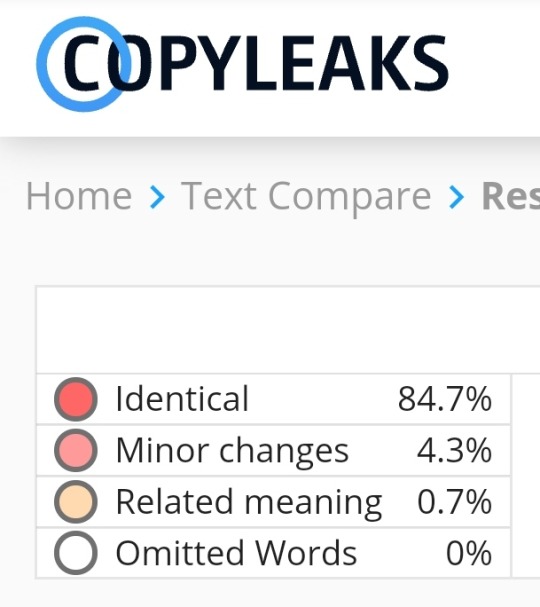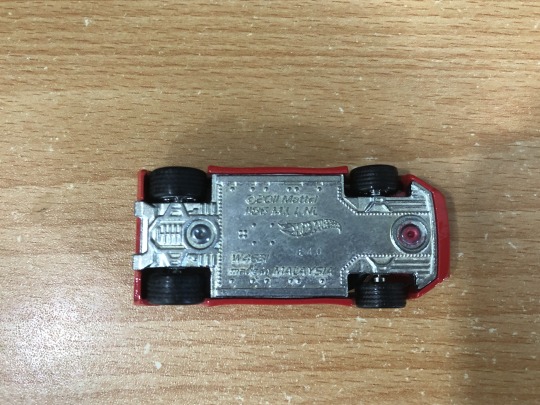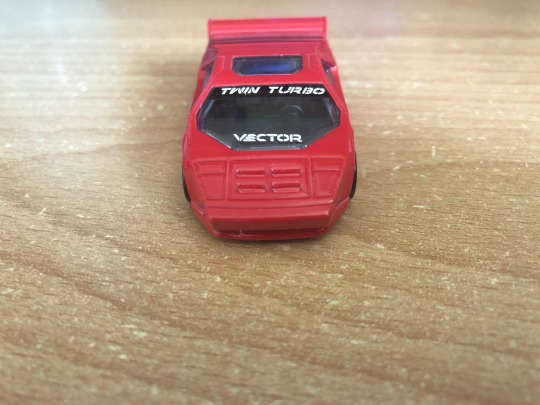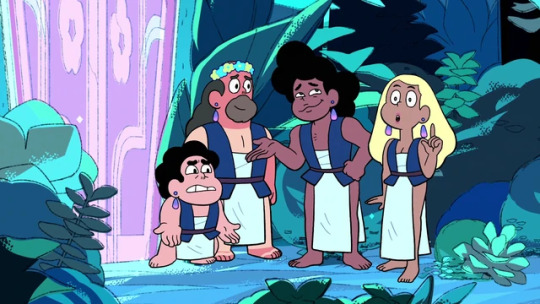#“okay what's the metric system version of ten seconds”
Text
I usually don't stim but occasionally my brain will just be like "okay it is time" and then I'll slap my legs up to ten times a second for like half a minute
#i know my blood sugar is low because#for half a second i was like#“okay what's the metric system version of ten seconds”#but tbf why is time measured in 60s
0 notes
Text
CHAPTER ONE: FIRST SIGHT
AKA, blessed fucknuggets, why do these fools feel the need to put themselves through high school, my sources tell me that the US school system isn’t all that to begin with, what gives?
PREVIOUS ENTRIES
(Warning: this got long. Looooong. Hence, cut, so that I don’t murder your dash like Edward doesn’t murder Bella in this chapter.)
Welcome to the first entry of a live-read that no one asked for, in which I’ll go through the first chapter of Midnight Sun, i.e. a retelling of the first Twilight book from Edward Cullen’s POV. Not to be confused with Grey, a retelling of the first volume of a Twilight fanfic with the serial numbers filed off, or the Life and Death edition, a retelling of the first Twilight book in which Bella Swan is genderbent into a dude called Beau, who utters the immortal line “I knew I must look like a gorilla on a greyhound.” Which still tickles my humerus to this day.
I’ve waited for this novel to drop so long that at some point I’d stopped waiting. If by some freaky turn of chance you stumbled on this without knowing about the hoopla surrounding the publication, here’s a Wikipedia link. The gist is that the first few chapters of the WIP got leaked, the author got upset, the book got shelved until ??? and no further information about it was forthcoming until a while ago, when out of the blue arrive the news that it’s getting released in August.
My first thought was “Oh, yay, something actually NICE is happening this year!”
My second thought was “Please let it be good, so that I can laugh outrageously at [name redacted] for mocking my enjoyment of this series!” And. Look. I know what’s said about Twilight with regards to its literary merit and Stephenie Meyer’s abilities as a writer. A lot of it is admittedly accurate. However, the metrics by which I measure the value of a book are a) did it entertain me? and b) did I gain anything by having read it? And yeah, those are personal and subjective items, but objectivity is a lie, Jesus enjoys using toasters to take selfies, and if ten years ago I hadn’t been looking for a place to post my 50k+ epic Renesmee-centric fanfic, I wouldn’t have met the people who are currently my best friends.
Which is to say: I’m too attached to this series to give a fig what color the prose is. Deal.
And yet. Me hoping that Midnight Sun would be good, in a way that people who don’t have my level of emotional investment might acknowledge, wasn’t… that farfetched? Because the last book Meyer released before this one, The Chemist? Is an improvement on all her previous work. A huge improvement! It’s competently written! The characters read like they were intended to be flawed, messy people.
The main romance isn’t the kind of fucked up that Bella and Edward’s is, where you can pen treatises on why they’re omg so unhealthy. It’s the kind of fucked up where five seconds after meeting her love interest, the protagonist drugs him unconscious, kidnaps him, sticks a urinary catheter up his ding dong, straps him to a table and tortures him for information until the guy’s ex-CIA identical twin drops a plane on the barn they’re in and crashes through the ceiling all “HANDS OFF MY BABY BROTHER YOU DISCOUNT MATA HARI!”
Then they all make friends and go on a road trip together because a shady government organization is after them.
That’s not a fucked-up relationship that you write an essay analyzing the fucked-up-ness of. It’s something you stare at, stunned and, if you’re me, torn between thinking “Holy shit, this is so my brand of heroine!!!” and “How much crack was Auntie Steph on when she wrote this?” And it’s beautiful. I want ten more like it. So my hopes for Midnight Sun are tempered by the knowledge that, being a retelling of an established narrative, it can’t go all-out with the batshit. But I’m still optimistic that some part of it will give me that warm “Awww, you’ve come a long way from where we first met, author! Good on you!” feeling.
Now let’s (finally!) get started on the chapter proper.
…oh wait there’s an author’s note.

…uhm. Yeah. My dreams. About those. *fixed stare at faraway bonfire* Actually, let’s not talk about those and just move on to Edward Not Liking High School, thank you. Yeah. That’s good.
Edward Cullen doesn’t like high school. Edward doesn’t like that people think. Edward doesn’t like that the human student body is beside itself with the arrival of some new chick. Edward thinks his adopted siblings are super basic. (Rosalie = shallow, Emmett = simple, Jasper = psycho two seconds away from jumping off his chair and going on a rampage.) We don’t get to hear his utterly unbiased assessment of Alice, because she butts in and starts a one-sided telepathic convo about how Jasper is two seconds away from jumping off his chair and going on a rampage. You know. Normal sibling stuff.

WHY DO YOU PUT YOURSELF THROUGH THIS HASSLE, WHY!
(Let me take this opportunity to share my pet crack theory that Carlisle Cullen is secretly the most twisted, evil vampire in all of vampiredom, and that the sending the young ones to high school bit is something he does solely because he gets his evil fix by feasting on the emotional toil it inflicts on them. Also why he’s a doctor; he can ignore the call of blood, because being surrounded by the pain of patients and their loved ones already keeps him fed. I mean. He was chilling with the Volturi way back when, and Aro gives off a handsy vibe. No way he didn’t get his mind read in every which way, and if that happened - if he were reaaaalllyyyyy that nice, why would he still ping them as a threat of any kind?)
(This has holes in it, I know. And clashes with my other pet crack theory, which posits that the whole immortal child/Let’s Catch Them All: Cullen Edition was in fact the fallout of a Very Bad Italian Breakup, with Aro being the pissy ex who wants sole custody of the kids.)
Whatever. It still makes more sense than them going through “the inert state between active periods” when. My dudes! College is right there. Some places you can even sit out 90% of lectures and still get your diploma if you don’t feel like faking one, so Jasper would be all set! And you can pick different subjects! Diversify! Why must it always be med school rehashes, there are other worthy professions! And whole fields that are useless for getting-a-job purposes, but still interesting and enriching for those who have the luxury to pursue them. Let Emmett do Viking Studies, for fuck’s sake!

This amuses me much more than it rightfully should. I’m a child.
The Cullen clan tries to pep talk Jasper into not getting his murder on. Jasper is like OMG WILL YOU GUYS LAY OFF, while Edward is busy doing his judgy Edward thing and thinking to himself that Jasper should accept his limitations, that it’s a bad idea to have him at school at all, blah blah bleh, and you know what, I’m with you there, Ed.
Although we all know that this is just setup for the irony that will ensue as soon as Bella the Delicious klutzes her way into his line of smell.

Oh yah! Enter Bella. Edward can’t hear her thoughts. Jessica Stanley is a b-word. Edward wonders whether not being able to butt into the new girl’s head may be a red flag for vampire Alzheimer. Biology class next! The teacher is a man “of no more than average intellect” and, lord. It’s lucky that Edward is the mind reader in the family, because imagine if it were one of the others and they had to put up with listening to him bitch about the world at large, nonstop, at all hours of the day. And night, since these guys don’t sleep. Angela Webber is the only soul in the whole school whose thoughts have the Edward Cullen seal of approval. I feel sorry for her. I also feel this weird sense of hey, this all seems familiar in senses other than being a retelling, have I been here before?
Wait.
WAAAIIIIIITEEEEE.
*googles for the old version*
*runs first chapters through copyleaks*

*kubrick stare* MEYER, YOU LAZY SO AND SO, HOW COULD YOU!
*slams head on desk*
Well. At least I know what I’m in for. HONESTLY! It’s been. It’s been THIS MANY YEARS since the leaked version appeared, and that was a first draft, how in the… she’s way better than this, now! Was this novel produced in a terminal state of $#%CARING#NOT?&FOUND?! Is half of it just going to be the same old thing with a thin veneer of polish? I’m.
*sigh* You know what, I’m okay. We’re just going to call this first part a re-read. It’s been ten years, so I remember not a whole lot of the specifics, so at least I won’t be bored. BUT COME CHAPTER 13 I EXPECT TO BE SWEPT OFF MY FEET, DO YOU HEAR ME?!
Biology. Bella walks in right past a fan and gives Edward a throbbing throat boner. How awkward. Then she goes and sits right next to him and saucily tosses her hair around like he’s not actively plotting her murder and that of the rest of the class. The cheek of the thing!
Fortunately, Bella’s tasty ass is momentarily saved by a stiff breeze.

…I think we may have found the solution to Jasper’s control issues. The Cullens just need to start carrying air freshener around and spray the murder out of him every time he starts looking peckish. It would look weird if anyone else did it, but since they’re all pretty and rich, it’s more likely that the trend will catch on and cause Febreze sales to skyrocket.
Anyway. We’re not done victim-blaming Bella for…

…at least another couple of pages, but at least Edward gets his head out of his ass long enough to recall that hey, vampire! Oxygen is optional! But he still spends another lot of words grumbling about what a hassle it is to be forced to hold his breath in order to dampen his murderous urges. This is why you are a virgin, Edward. No, I don’t mean the planning the assassination a classmate’s assassination, plenty of serial killers still manage to get laid heaps, consensually, even! It’s the fact that you’re this much of a buzzkill that’s the issue.
Live, laugh, love, you dumbass disco ball!
Yep, he’s still on about how he’s going to kill her, totes kill her, he feral dangerous vampire, rawr. The miracle of adequate indoor airflow only got him to railroad a quartet of brain cells into thinking up smarter ways of snuffing Bella out. Now he wants to lure her to the forest. No, he’s going to kill her at home! He hates her! No, he hates himself and is projecting!
So he flees to his car, plays some calming music, breathes in and out and thinks about his family and how disappointed they’d be in him if he were to help himself to a Swan shake. Well, I’m nobody to shit talk anyone’s self-soothing routine. I’d probably throw in a truck of food + a bath, but he’s had 100+ years to figure out what coping mechanisms work for him, so let’s just let him do his-
Edward.
EDWARD.

…do you actually think this is an appropriate time to start a ginger-off with some random desk lady? Yes, we know you’re the One True Redhead To Rule Them All. (Though Kvothe from Name of the Wind may beg to differ, and I don’t know who would win that fight.) I mean, really? You pull this crap when you just barely talked yourself out of a murder? And then you call her eyes flat! What!
One of my favorite comic book series, Y the Last Man, features a scene where two characters discuss what it is that truly binds people together. One of them presents the argument that stronger bonds are formed not by shared love, but by shared hates. By which they mean not a kiss-kiss-slap-slap, enemies-to-lovers relationship dynamic, but like… you, being someone who really hates coleslaw, having a partner who likewise hates coleslaw, with whom you can indulge in tireless verbal roastings of coleslaw and who will never get tired of your complaining, because the fire of their loathing burns every bit as hot as yours.
I’ve always felt that this concept resonated with me deeply. And if you apply it to Bella and Edward, by its standards, they have the real deal. Go through the namesake chapter in Twilight-the-book, and you find Bella thinking similarly judgy thoughts, being irked by the same shit that no one normal would bat an eye to, going “Ugh!” and “Gah!” at everything that makes Edward wince internally. So their love will be eternal for sure. Perhaps not in an epic way. They’ll live boringly ever after, until they’re ancient and onion-skinned and lurking at passerby humans through the geraniums on their windowsill, exchanging “Holy crow, I can’t believe she bought a hydrogen engine car just to show off!” / “Awful! She should know that thinning the deer population so that they produce less flatulence is the most sound way of controlling toxic emissions!” And then probably gazing at one another like idiots for an ice age or two.
Edward wants to be moved out of Biology class. Goes back and forth with the desk lady, who obviously wants to tap that, because of course she does. Every hot-blooded woman within spitting distance must crave his alluring icicle, even as he mentally eviscerates every minuscule detail of their appearance.
Except Bella, because she’s soft, translucent, deep-eyed and edible. And, I mean. You can complain all you want about “you’re different from anyone else I’ve ever met, you’re SPECIAL, better, more beautiful, more everything!” being a dead horse of a trope so old and beaten that by all rights it should have turned to smelly glue, but. That pony is still kicking. And by kicking, I mean selling. And it sells because being made to feel special, even if it’s happening by proxy while you’re immersed into the thoughts of a fictional character, is nice. Readers enjoying that experience and seeking out fiction that provides it shouldn’t be considered so… mock-worthy as I’ve seen it be, in discussion of works that feature the trope prominently.
Which doesn’t mean that it wouldn’t be nicer if Edward’s narration were focused solely on elevating Bella, instead of also viciously kicking down everyone in the vicinity. Man, we get the message, okay? You don’t need to act like you’ve swallowed a Simon Cowell before coming in for school.

I swear, it’s almost a relief when Bella interrupts, heralding the triumphant return of the throat boner. Edward’s thoughts about the people around him are actually LESS gratuitously bitchy when he’s contemplating how to best murder them.
At least this time he is able to extract himself from the situation and flee speedily. (Which… in Biology, what exactly was preventing him from asking for a bathroom break? Or just saying he was feeling poorly and getting the fuck out of there?)
He meets the sibs. Only Alice has any clue of what is going on because visions, and she doesn’t explain anything to the others, who just stand there baffled while Edward decides to get his shiny ass in his shiny Volvo and run off to Alaska. Probably because it would ruin the serious mood of the scene if she told them and Jasper started doing happy cartwheels at the prospect of no longer being the only fuckup in the family.

END CHAPTER. Same time tomorrow, hopefully, and I’ll TRY to be less longwinded. Try.
3 notes
·
View notes
Photo

Casting Call: Vector W8
First off, I’d like to apologize for the fact that I’ve not been updating my Tumblr lately. I’ve been busy at work and haven’t had time to write something. To make up for this... I’m writing quite possibly one of my longest posts yet.
By popular demand, this is the casting you chose on Instagram for me to document: the Vector W8. Grab some popcorn, a drink or some music... and enjoy the read. This is also in some ways a car that time forgot, but it’s not a concept car... but I can break the rules because I made them.
When it comes to cars of the ‘80s, there is a debate as to what the best car of the era was. Many say it would be either the Lamborghini Countach or the Ferrari Testarossa. But I have something that is neither of those things. Today, we’re going to take a trip down memory lane and explore the car that attempted to elevate a small company to the dizzying heights of the supercar realm. This... is the Vector W8.

First, here’s a bit of background. The W8 was manufactured by a company known as Vector Motors, then known as Vector Aeromotive. The company was founded in 1971 as Vehicle Design Force by Gerald “Jerry” Wiegert in Wilmington, California; we’ll get to the full history of Vector in a post in the near future because it is honestly very interesting.

In essence, the W8 was a highly refined version of the Vector W2, one of the company’s initial prototypes (the “W” in the name stood for “Wiegert”). Wiegert wanted to put the W2 into production, but an economical downturn prevented him from doing so. However, by the ‘80s, Wiegert had eventually secured enough capital through public stock offerings and even various lawsuits, allowing him to chase his dream: to build his ultimate sports car, designed and built by his own company.

Design inspiration for the W8 (and by extension the W2) came from this green car: the Alfa Romeo Carabo (Hot Wheels actually did a model of this way back when). Its sleek, futuristic and aerodynamic design was perfect for Wiegert, especially with the aerospace theme the company was going for in the ‘80s.

Combining the sleek looks of the Carabo with the geometry and technology of fighter jets of the time like the F-15 Eagle, F-16 Fighting Falcon and F/A-18 Hornet, Wiegert and chief designer David Kostka set out to create what would be quite possibly the most insane supercar of the ‘80s, and probably still is now: the Vector W8. The term “Aeromotive Engineering” was used to describe the process of manufacturing this car, for the car used the newest and most advanced aerospace materials when manufacturing the W8.

The car passed the mandatory DOT crash tests and emissions tests. It used a semi-aluminum monocoque chassis which was epoxy bonded and riveted using 5000 aircraft-specification rivets with an aluminum honeycomb floorpan. The body was made mainly of carbon fiber and Kevlar. The car featured scissor doors, like a Lamborghini.

The beating heart of the W8 was this: a highly-modified aluminum resleevable 6.0L Rodeck twin-turbocharged racing V8 with variable boost pressure. The engine produced 625 horsepower and made 649 lb⋅ft (880 N⋅m) of torque at 4,900 rpm at 8 psi of boost pressure, and as if the Rodeck V8 couldn’t get any more ridiculous, it featured TRW forged pistons, Carrillo stainless steel connecting rods, stainless steel valves and roller rocker arms, a forged crank, a dry-sump oiling system with three separate filters and braided stainless steel hoses with anodized red and blue fittings. This engine sounded mad; click here to hear a Vector starting up and revving.

Yes, you heard that correctly; variable boost. The boost for both turbochargers was adjustable from 8 to 14 psi through a dial in the interior. And speaking of which, let’s talk about that next; because, if you thought the engine was already mad enough, the interior is on a whole other level.

As you can see, the interior of the W8 is mad. Fighter jet-inspired screen? Check. A million buttons everywhere? Check. Gauges? ...no check. And hang on... is that what I think it is? A Turbo-Hydramatic 425 transmission?

Yep, that’s right, and that just makes the car a lot more insane; this ridiculously powerful 6.0L Rodeck V8 was mated to a 3-speed Turbo-Hydramatic 425 automatic transmission. Next to it on the right was the handbrake, sort of shaped like the throttle on a fighter jet. Due to the placement of the transmission and the handbrake, the driver side doorsill is very, very wide, making it a bit tough for the driver to get in and out of the car. You will also notice that there are buttons on top of the gear stick. I’ll get to those now.

As if this car couldn’t get any more ridiculous. This is the screen of the Vector W8, with four different settings (controlled with those four buttons), marked “Main”, “Performance”, “Performance” again and “Chassis”. This is the “Main” screen, showing the odometer, fuel gauge, speedometer and tachometer.

This is the first “Performance” screen, showing engine temperature, oil pressure and temperature, the tachometer reading and various other metrics.

The third screen was the second “Performance” screen, showing the transmission pressure (because it had a torque converter) and transmission temperature as well as battery voltage.

The last screen was the “Chassis” screen, which showed a picture of the W8 which updated in real time when a door was opened, when the engine compartment was opened and so on.

On the other side, you will notice that the W8 doesn’t actually have a partition between the driver and passenger side footwells. So it is a little awkward. This car also has no glovebox; in its place is a... CD changer?

Yes, that’s right. The car came with an in-car stereo... and a Sony CDX-A2001 ten-disc CD changer which graced the entire right side of the car’s already insane instrument panel. This was a nice innovation, although it did came with one drawback; no passenger-side airbags. Good luck if you get into a crash riding shotgun.

Back to the interior though. It was upholstered in premium leather and suede, with electrically adjustable leather Recaro seats and featured a premium air-conditioning system. Some driving amenities such as power steering were excluded. The seating position for the driver was made slightly towards the center for better drivability.

The rear of the W8 was dominated by lines, and the rear sightline... wasn’t very good, mainly because of that gigantic wing. The license plate holder is located on the left and apparently may have been an afterthought. “TWINTURBO” is seen gracing the back.

The car also features a trunk which is just behind the engine.

As for the front... oh, right, the headlamps. They’re not pop-up... they’re pop-DOWN.

The car also has a storage cubby up front, although really, it wasn’t much.

Also gracing the front were windshield wipers, as you would expect on practically every other car. However, there wasn’t just one, nor was there just two: there were THREE. A moonroof was also standard. It also had sliding side windows like a race car, as well as power-adjustable side mirrors.

The logo on the side of the car was the only thing that really gave any indication as to what manufacturer it was.

The car had unique six-spoke “turbine” wheels fitted to Michelin XGT Plus tires; the car used 255/45ZR-16s in the front and very, very strange 315/40ZR-16s in rear. These wheels were apparently of a bespoke design made to the driver’s specifications.

In terms of suspension, the W8 featured double A-arms up front and De Dion tube suspension at the rear, located by four trailing arms that stretched all the way forward to the firewall. The W8 used 13-inch vented disc brakes with Alcon aluminum 4-piston calipers.

In terms of performance, the Vector shined; it claimed to be able to do 389 km/h (242 mph) and a 0-60 mph (0-97 km/h) time of 3.9 seconds. These numbers were never officially tested, but if true, these are very impressive numbers for the time. Okay, enough about the W8’s performance and figures; let’s get to the part you’ve been waiting for, the history.

The W8 was first introduced in 1988 with a sticker price of about $185,000, priced within striking range of European competitors like the Lamborghini Diablo.

One high profile owner of a W8 was this man: Andre Agassi, although he ended up giving the car a bit of a bad rap. Agassi had insisted that his car be delivered before it was fully prepared; Vector agreed to this on the condition that Agassi not drive it and keep it in storage as the car was adjusted for the various emissions regulations in place. Agassi did not listen and drove it and ended up burning the rear carpeting due to an overly hot exhaust system; Agassi ended up requesting for a refund, which was ultimately granted. I’ll let you decide who’s at fault here.

Car And Driver magazine also tested the W8, but couldn’t complete testing because all three cars they were sent somehow managed to break down in different ways, leading to even more bad publicity. However, not all is bad as Road and Track magazine waxed lyrical about the Vector, praising practically every aspect of the W8’s performance.

Vector was still going strong in 1993, selling W8s; however, Wiegert was already planning for a successor. That successor was to be known as the AWX-3, better known as the WX-3 (Hot Wheels also made a model of this one too), where the name stood for Avtech Wiegert eXperimental, 3rd generation.

I’ll get into more details of the WX-3 in a later blog when I receive my WX-3 from the United States. Production of the W8 ultimately came to a halt in 1993 as Wiegert attempted to put the WX-3 into production; however, as the company was engaged in a hostile takeover by a Bermuda-based Indonesian company known as MegaTech, production never resumed and Vector entered a sharp decline. I’ll get into the rest of that history in another post.

In total, twenty-two cars were produced; seventeen of which were customer cars and five of which were prototypes. The car is now worth over $1 million today; so, if for some reason you ever see a car that looks like this on the roads, drop everything and take as many pictures as you can, because you have just seen one of only twenty-two Vector W8s. Okay, now that we’ve gotten all that out of the way, let’s get to the reason why you’re here.

This... is the Hot Wheels version of the Vector W8. Named the Vector W8 Twinturbo in the Hot Wheels lineup, this casting was first introduced in the 2012 HW Boulevard series in the Ahead Of Its Time sub-series. This casting was designed by Manson Cheung.

The base of the W8 features no mention of “Vector” anywhere; instead, just the SKU is displayed: W4831.

The sides feature the text “VECTOR W8 TWINTURBO” and nothing else. Black lines streak across the back to represent the engine cover.

The rear fascia is nice, although my only real gripe is a lack of rear detail apart from the engine cover.

The front fascia is also well done, with “VECTOR” and “TWIN TURBO” on the windshield, although a lack of detail on the body apart from the side reflectors leaves me wanting more. The interior is painfully cramped so I can’t get any good photographs, but what I see are the Turbo-Hydramatic shift lever, the steering wheel, seats and molded pedals (those pedals are part of the base). The distinctive screen and CD changer are absent from the instrument panel, but of course, you can’t have everything.

Folks, I believe you may have heard of the term “One-Hit Wonder” before. This is exactly an example of that; the W8 only saw one release in the HW Boulevard series and has not been seen since. As a result, prices for the Vector have been steadily climbing on eBay and I don’t see them going down for some time; why don’t you take a look for yourself?

I hope this long writeup has given you a better idea on this turbocharged thrasher, and what is quite possibly my new favorite supercar from the ‘80s; step aside, Lamborghini Countach. As usual, I’d do something like this any day.
This article is the first in a three-part series I will call The Vector Saga. The series will document the W8, the WX-3, and the history of Vector Motors as a whole.
#hotwheels#CastingCall#vectorw8#vectorw8twinturbo#mansoncheung#thattimeforgot#vectoraeromotive#thevectorsaga
1 note
·
View note
Text
Episode 117: The Zoo

“Can you blame ‘em?”
Every Western story about a return journey can be compared to The Odyssey if you squint hard enough, and while Steven’s rescue of Greg has already featured poor decisions and a cyclops, The Zoo is our most obvious reference point to a trial of Odysseus: in this case, the Lotus Eaters.
Does it make sense that such a small population could genetically reproduce this long? Let alone that distinct races would still be a thing in this inevitably incestuous family tree spanning millennia? Does it make sense that everyone here is roughly the same age, with barely any old people or children? Or that they’re speaking English, a language thousands of years younger than the last human abducted for the Zoo before Greg? Of course not, this is a nonsensical system. But if the choice was eleven minutes going over hyper-realistic minutia of how this system works (most likely, these folks are divided into small packs and we’re just seeing one of many groups) versus an interesting fable about free will and the conflict between hedonism and responsibility, I’m good ignoring the massive leaps required for the Zoo to hold logical water.

A thorny ethical question presents itself here: if the Zoomans are eternally happy and safe, to the point where they don’t understand the concept of “hurt,” is it such a bad thing that they lack free will? To us, freedom is such an obviously good thing that its value is taken as a given, but all choice does here is make the Zoomans unhappy for the first time since an incident long ago enough to be the stuff of legend. This is a group of people whose culture predates Ancient Greece and is still going strong, outlasting any human civilization that’s ever existed on Earth by an impossibly huge degree, so what right do we have to think our moral code is superior to theirs?
The Zoo is dystopia by way of Dora the Explorer, a perfect prison that has babied its inhabitants for so many lifespans that they can’t even fathom disrupting the system. A friendly voice tells them what actions to take to have fun (Smell the flowers! Go to bed! Swiper, no swiping!) and the Zoomans obey without hesitation; they are essentially to humans what modern dogs are to wolves, a domesticated and perpetually juvenile version of the original model. But they certainly aren’t a different species in that way (dogs diverged from wolves genetically tens of thousands of years ago, rather than a paltry 5,000); we see that the Zoomans are quickly capable of making choice when the idea is planted, but they choose to listen to the little voice. Is it ethical to give them the information to make a more informed choice? My gut says yes, but that’s based on a moral code developed by a society that, like English, is much younger than Zooman society.
The second question that arises from the first is the morality of Pink Diamond’s actions. From a Gem perspective, it’s a no-brainer: free will isn’t a societal good to them, so even if Earth wasn’t destroyed as originally planned when the Zoo was built, bringing people to a paradise whose only cost is freedom is an obvious win. This matters a lot for Blue Diamond, who’s still patronizing in her “saving” of Greg but clearly means well by her own alien metrics of good and bad. And in that way, on first viewing, Pink’s behavior becomes far less ambiguous than “evil alien kidnaps humans.” If she’s anything like Blue, she considered it a favor, and that alone characterizes her more than anything else we know at this point.
In retrospect, the Zoo is more clearly a half-measure taken when Pink was trying and failing to stop the colonization she began. This conflict wasn’t short, and it’s great to see evidence of Pink trying smaller ways to help humans before realizing that more drastic actions were necessary, rather than her just jumping straight to full revolution. The fact that the Zoo is still a thing after her permanent shift to Rose Quartz, however, is one of many indicators of Pink’s childish selfishness. She didn’t release the humans she abducted, just as she didn’t think of how her faked murder might have more violent consequences than a freed Earth. I call the selfishness childish because it comes not from malice, but seemingly not knowing any better. This is the self-centeredness of somebody who’s never had any reason to not be self-centered, which doesn’t absolve the harm she causes, but makes her more interesting than a true monster.

While the Gem perspective is clear, Steven provides an ardent opposition to the concept of paradise without choice. At no point is he tempted by a life free of worries, valuing his ties to an existing life despite its many warts. And while Greg shows a few hints of falling for the Lotus Eater trap in his more relaxed attitude towards captivity, it’s crucial that his support of Steven trumps the comfort of this new reality; an entire episode about Greg measuring an easy life versus his son’s happiness, while in keeping from the weird shitty version of Greg we met in House Guest, would’ve been ruinous to his actual character. He’s still chill, and encourages Steven to chill as well for his own well-being, but never goes further in trying to stay at the Zoo; we even know that he tried to escape before Steven arrived.
While their long-awaited reunion is sweet, my favorite Steven'n’Greg moment is the realization that amethysts will likely arrive in response to pain. Steven’s insistence that Greg hit him comes from both impatience and the knowledge that he can take a punch, but Tom Scharpling perfectly captures how insane this sounds to Greg. Even though he’s physically weaker than his superhumanly powerful son, Greg’s willing to get hurt in his kid’s place. And still, Steven hesitates, because neither of these people wants to hit the other despite the circumstances. Finally, after Steven’s punch sends Greg flying, I appreciate his idea to try punching him again; to me, it’s representative of how much Steven thinks of his dad, because he just assumes this middle aged dude is tough enough to shrug off such a blow.

The two lead Zooman representatives sorta blend together, but I think that’s the point: in a society where conformity is the only option, everyone’s bound to act similarly. They’re both portrayed well enough to avoid boring tropes associated with characters like this (we don’t get airy hippies or droning disciples): Cristina Vee’s Jay-Ten and Lamar Abrams’s Wy-Six are delightfully dopey and just a little bit self-superior when things they find obvious are a mystery to our heroes. Vee doubles as the Little Voice, which is correctly played without a hint of menace, and while Abrams has already proven himself as Buck Dewey, I’m impressed by his ability to play a fully different character just as well (he’s also Garbanzo, who also sounds distinct, but he only says his own name so there’s not much room to measure differences).
While I have no idea whether the pun is intentional, I am all about these people raised beyond the stars being spacier than our more grounded Earthlings. Still, their one-note nature means that my favorite Zooman moments are actually Steven’s reactions to them. His quick decision to escape after being told to do “the bits” bit is low key hilarious, as is his bewilderment at their tiny splashes. These aren’t people that are going to make jokes or clever observations on their own, at least in a way that can match what their terrestrial counterparts can accomplish, but at least I never feel bored with the routine in a way that detracts from the episode.

In contrast to the mundane hedonism of daily life, the Choosening is just the sort of cultish jargon that one might expect from a society like this, and I love the familiarity implied in Greg’s world-weary comment that there’s always a catch with this sort of thing. We have no way of knowing how arbitrary the Choosening is, but considering Greg gets chosen Choosened right after arriving, it certainly seems random. While arranged marriage is obviously a thing on Earth as well, the power dynamics on the Zoo are more akin to forced marriage. But even this is colored by an earthly glimpse at an alien culture, because we don’t have any societies with an all-powerful overclass and a genuinely content and cared-for underclass. Is it really forced marriage if the parties involved are happy about it? Even if this is due to them being happy about everything that happens in this society? Are they really capable of true happiness when they’ve experienced no alternate emotions?
This is where the theme of choice versus happiness comes to a head, and it’s so important that we don’t get a tidy ending where free will is presented as a liberating alternative to a peaceful life of following orders. Choices allow for more meaningful happiness, but can lead to sadness as well; while this might seem obvious, I’m always down for children’s media explaining why negative emotions can be okay sometimes (see: Inside Out) and that a life free of pain isn’t necessarily good. It would be disingenuous for real choice to be presented without backlash to a society without free will, and we don’t even get to see how the situation resolves in the original series.
The amethysts march in to help, and Michaela Dietz wonderfully captures gruff warriors helping with emotional wounds. But we end the episode with the Zoomans in turmoil, abandoned by our heroes without a second thought. Based on how the system works, all it takes to reject the Little Voice is just deciding not to listen, and it hadn’t been done before because the Zoomans wanted to listen; again, it’s a tricky situation, because perhaps they do have free will and have chosen obedience. .

As in the last few episodes, we get a cliffhanger ending, but The Zoo bounces back from Gem Heist by having an actual complete story within the chapter. Steven and Greg make a meaningful impact on the Zoomans, but whether it’s for better or worse is up in the air. Our heroes gain the option to eat lotuses in peace for the rest of their days, but choose freedom instead. And they reinforce their bond by sticking together through it all. Now they just have to escape a space station crawling with Gems and find their missing friends and fly home, and that will be all!
Future Vision!
The Zoomans finally return in Steven Universe Future, where their utopia has been expanded to include the Famethyst and Holly Blue. They may be running the station, but they choose to live the way they always have. They’re also petty as hell, which is an excellent development for their passive society.
We’re the one, we’re the ONE! TWO! THREE! FOUR!
While I appreciate the moral questions prompted by The Zoo, and enjoy the episode itself, it’s not quite something that I’d say I love. There’s nothing I find wrong with it, but it lacks a certain amount of oomph that might make it worthy to stand alongside the likes of Alone at Sea or Maximum Capacity in my rankings; this is a high concept episode that has decent character work, but ratio of focus on concept to character doesn’t align with what I love about Steven Universe.
It’s weird to put it in the same category as Gem Heist, because I like The Zoo a lot more, but this is what I get for not having way too many categories. Enh, I can live with it.
Top Twenty
Steven and the Stevens
Hit the Diamond
Mirror Gem
Lion 3: Straight to Video
Alone Together
Last One Out of Beach City
The Return
Jailbreak
The Answer
Mindful Education
Sworn to the Sword
Rose’s Scabbard
Earthlings
Mr. Greg
Coach Steven
Giant Woman
Beach City Drift
Winter Forecast
Bismuth
Steven’s Dream
Love ‘em
Laser Light Cannon
Bubble Buddies
Tiger Millionaire
Lion 2: The Movie
Rose’s Room
An Indirect Kiss
Ocean Gem
Space Race
Garnet’s Universe
Warp Tour
The Test
Future Vision
On the Run
Maximum Capacity
Marble Madness
Political Power
Full Disclosure
Joy Ride
Keeping It Together
We Need to Talk
Chille Tid
Cry for Help
Keystone Motel
Catch and Release
When It Rains
Back to the Barn
Steven’s Birthday
It Could’ve Been Great
Message Received
Log Date 7 15 2
Same Old World
The New Lars
Monster Reunion
Alone at Sea
Crack the Whip
Beta
Back to the Moon
Kindergarten Kid
Buddy’s Book
Gem Harvest
Three Gems and a Baby
Like ‘em
Gem Glow
Frybo
Arcade Mania
So Many Birthdays
Lars and the Cool Kids
Onion Trade
Steven the Sword Fighter
Beach Party
Monster Buddies
Keep Beach City Weird
Watermelon Steven
The Message
Open Book
Story for Steven
Shirt Club
Love Letters
Reformed
Rising Tides, Crashing Tides
Onion Friend
Historical Friction
Friend Ship
Nightmare Hospital
Too Far
Barn Mates
Steven Floats
Drop Beat Dad
Too Short to Ride
Restaurant Wars
Kiki’s Pizza Delivery Service
Greg the Babysitter
Gem Hunt
Steven vs. Amethyst
Bubbled
Adventures in Light Distortion
Gem Heist
The Zoo
Enh
Cheeseburger Backpack
Together Breakfast
Cat Fingers
Serious Steven
Steven’s Lion
Joking Victim
Secret Team
Say Uncle
Super Watermelon Island
Gem Drill
Know Your Fusion
Future Boy Zoltron
No Thanks!
6. Horror Club
5. Fusion Cuisine
4. House Guest
3. Onion Gang
2. Sadie’s Song
1. Island Adventure
25 notes
·
View notes
Text
How to Prioritize Your Link Building Efforts & Opportunities — Best of Whiteboard Friday
Posted by randfish
We all know how effective link building efforts can be, but it can be an intimidating, frustrating process — and sometimes even a chore. In this popular Whiteboard Friday originally published in 2017, Rand Fishkin builds out a framework you can still use today to streamline and simplify the link building process for you, your teammates, and yes, even your interns.

Click on the whiteboard image above to open a high-resolution version in a new tab!
Video Transcription
Howdy, Moz fans, and welcome to another edition of Whiteboard Friday. As you can see, I'm missing my moustache, but never mind. We've got tons of important things to get through, and so we'll leave the facial hair to the inevitable comments.
I want to talk today about how to prioritize your link building efforts and opportunities. I think this comes as a big challenge for many marketers and SEOs because link building can just seem so daunting. So it's tough to know how to get started, and then it's tough to know once you've gotten into the practice of link building, how do you build up a consistent, useful system to do it? That's what I want to walk you through today.
Step 1: Tie your goals to the link's potential value
So first off, step one. What I'm going to ask you to do is tie your SEO goals to the reasons that you're building links. So you have some reason that you want links. It is almost certainly to accomplish one of these five things. There might be other things on the list too, but it's almost always one of these areas.
A) Rank higher for keyword X. You're trying to get links that point to a particular page on your site, that contain a particular anchor text, so that you can rank better for that. Makes total sense. There we go.
B) You want to grow the ranking authority of a particular domain, your website, or maybe a subdomain on your website, or a subfolder of that website. Google does sort of have some separate considerations for different folders and subdomains. So you might be trying to earn links to those different sections to help grow those. Pretty similar to (A), but not necessarily as much of a need to get the direct link to the exact URL.
C) Sending real high-value traffic from the ranking page. So maybe it's the case that this link you're going after is no followed or it doesn't pass ranking influence, for some reason — it's JavaScript or it's an advertising link or whatever it is — but it does pass real visitors who may buy from you, or amplify you, or be helpful to achieving your other business goals.
D) Growing topical authority. So this is essentially saying, "Hey, around this subject area or keyword area, I know that my website needs some more authority. I'm not very influential in this space yet, at least not from Google's perspective. If I can get some of these links, I can help to prove to Google and, potentially, to some of these visitors, as well, that I have some subject matter authority in this space."
E) I want to get some visibility to an amplification-likely or a high-value audience. So this would be things like a lot of social media sites, a lot of submission type sites, places like a Product Hunt or a Reddit, where you're trying to get in front of an audience, that then might come to your site and be likely to amplify it if they love what they see.
Okay. So these are our goals.
Step 2: Estimate the likelihood that the link target will influence that goal

Second, I'm going to ask you to estimate the likelihood that the link target will pass value to the page or to the section of your site. This relies on a bunch of different judgments.
You can choose whether you want to wrap these all up in sort of a single number that you estimate, maybe like a 0 to 10, where 0 is not at all valuable, and 10 is super, super valuable. Or you could even take a bunch of these metrics and actually use them directly, so things like domain authority, or linking root domains to the URL, or page authority, the content relevance.
You could be asking:
Is this a nofollowed or a followed link?
Is it passing the anchor text that I'm looking for or anchor text that I control or influence at all?
Is it going to send me direct traffic?
If the answers to these are all positive, that's going to bump that up, and you might say, "Wow, this is high authority. It's passing great anchor text. It's sending me good traffic. It's a followed link. The relevance is high. I'm going to give this a 10."
Or that might not be the case. This might be low authority. Maybe it is followed, but the relevance is not quite there. You don't control the anchor text, and so anchor text is just the name of your brand, or it just says "site" or something like that. It's not going to send much traffic. Maybe that's more like a three.
Then you're going to ask a couple of questions about the page that they're linking to or your website.
Is that the right page on your site? If so, that's going to bump up this number. If it's not, it might bring it down a little bit.
Does it have high relevance? If not, you may need to make some modifications or change the link path.
Is there any link risk around this? So if this is a — let's put it delicately — potentially valuable, but also potentially risky page, you might want to reduce the value in there.
I'll leave it up to you to determine how much link risk you're willing to take in your link building profile. Personally, I'm willing to accept none at all.
Step 3: Build a prioritization spreadsheet

Then step three, you build a prioritization spreadsheet that looks something like this. So you have which goal or goals are being accomplished by acquiring this link. You have the target and the page on your site. You've got your chance of earning that link. That's going to be something you estimate, and over time you'll get better and better at this estimation. Same with the value. We talked about using a number out of 10 over here. You can do that in this column, or you could just take a bunch of these metrics and shove them all into the spreadsheet if you prefer.
Then you have the tactic you're going to pursue. So this is direct outreach, this one's submit and hope that it does well, and who it's assigned to. Maybe it's only you because you're the only link builder, or maybe you have a number of people in your organization, or PR people who are going to do outreach, or someone, a founder or an executive who has a connection to some of these folks, and they're going to do the outreach, whatever the case.
Then you can start to prioritize. You can build that prioritization by doing one of a couple things. You could take some amalgamation of these numbers, so like a high chance of earning and a high estimated value. We'll do some simple multiplication, and we'll make that our prioritization. Or you might give different goals. Like you might say, "Hey, you know what? (A) is worth a lot more to me right now than (C). So, therefore, I'm going to rank the ones that are the (A) goal much higher up." That is a fine way to go about this as well. Then you can sort your spreadsheet in this fashion and go down the list. Start at the top, work your way down, and start checking off links as you get them or don't get them. That's a pretty high percentage, I'm doing real well here. But you get the idea.
This turns link building from this sort of questionable, frustrating, what should I do next, am I following the right path, into a simple process that not only can you follow, but you can train other people to follow. This is really important, because link building is an essential part of SEO, still a very valuable part of SEO, but it's also a slog. So, to the degree that you can leverage other help in your organization, hire an intern and help train them up, work with your PR teams and have them understand it, have multiple people in the organization all sharing this spreadsheet, all understanding what needs to be done next, that is a huge help.
I look forward to hearing about your link building prioritization, goals, what you've seen work well, what metrics you've used. We will see you again next week for another edition of Whiteboard Friday. Take care.
Video transcription by Speechpad.com
To help us serve you better, please consider taking the 2020 Moz Blog Reader Survey, which asks about who you are, what challenges you face, and what you'd like to see more of on the Moz Blog.
Take the Survey
Sign up for The Moz Top 10, a semimonthly mailer updating you on the top ten hottest pieces of SEO news, tips, and rad links uncovered by the Moz team. Think of it as your exclusive digest of stuff you don't have time to hunt down but want to read!
0 notes
Text
How to Prioritize Your Link Building Efforts & Opportunities — Best of Whiteboard Friday
Posted by randfish
We all know how effective link building efforts can be, but it can be an intimidating, frustrating process — and sometimes even a chore. In this popular Whiteboard Friday originally published in 2017, Rand Fishkin builds out a framework you can still use today to streamline and simplify the link building process for you, your teammates, and yes, even your interns.

Click on the whiteboard image above to open a high-resolution version in a new tab!
Video Transcription
Howdy, Moz fans, and welcome to another edition of Whiteboard Friday. As you can see, I'm missing my moustache, but never mind. We've got tons of important things to get through, and so we'll leave the facial hair to the inevitable comments.
I want to talk today about how to prioritize your link building efforts and opportunities. I think this comes as a big challenge for many marketers and SEOs because link building can just seem so daunting. So it's tough to know how to get started, and then it's tough to know once you've gotten into the practice of link building, how do you build up a consistent, useful system to do it? That's what I want to walk you through today.
Step 1: Tie your goals to the link's potential value
So first off, step one. What I'm going to ask you to do is tie your SEO goals to the reasons that you're building links. So you have some reason that you want links. It is almost certainly to accomplish one of these five things. There might be other things on the list too, but it's almost always one of these areas.
A) Rank higher for keyword X. You're trying to get links that point to a particular page on your site, that contain a particular anchor text, so that you can rank better for that. Makes total sense. There we go.
B) You want to grow the ranking authority of a particular domain, your website, or maybe a subdomain on your website, or a subfolder of that website. Google does sort of have some separate considerations for different folders and subdomains. So you might be trying to earn links to those different sections to help grow those. Pretty similar to (A), but not necessarily as much of a need to get the direct link to the exact URL.
C) Sending real high-value traffic from the ranking page. So maybe it's the case that this link you're going after is no followed or it doesn't pass ranking influence, for some reason — it's JavaScript or it's an advertising link or whatever it is — but it does pass real visitors who may buy from you, or amplify you, or be helpful to achieving your other business goals.
D) Growing topical authority. So this is essentially saying, "Hey, around this subject area or keyword area, I know that my website needs some more authority. I'm not very influential in this space yet, at least not from Google's perspective. If I can get some of these links, I can help to prove to Google and, potentially, to some of these visitors, as well, that I have some subject matter authority in this space."
E) I want to get some visibility to an amplification-likely or a high-value audience. So this would be things like a lot of social media sites, a lot of submission type sites, places like a Product Hunt or a Reddit, where you're trying to get in front of an audience, that then might come to your site and be likely to amplify it if they love what they see.
Okay. So these are our goals.
Step 2: Estimate the likelihood that the link target will influence that goal

Second, I'm going to ask you to estimate the likelihood that the link target will pass value to the page or to the section of your site. This relies on a bunch of different judgments.
You can choose whether you want to wrap these all up in sort of a single number that you estimate, maybe like a 0 to 10, where 0 is not at all valuable, and 10 is super, super valuable. Or you could even take a bunch of these metrics and actually use them directly, so things like domain authority, or linking root domains to the URL, or page authority, the content relevance.
You could be asking:
Is this a nofollowed or a followed link?
Is it passing the anchor text that I'm looking for or anchor text that I control or influence at all?
Is it going to send me direct traffic?
If the answers to these are all positive, that's going to bump that up, and you might say, "Wow, this is high authority. It's passing great anchor text. It's sending me good traffic. It's a followed link. The relevance is high. I'm going to give this a 10."
Or that might not be the case. This might be low authority. Maybe it is followed, but the relevance is not quite there. You don't control the anchor text, and so anchor text is just the name of your brand, or it just says "site" or something like that. It's not going to send much traffic. Maybe that's more like a three.
Then you're going to ask a couple of questions about the page that they're linking to or your website.
Is that the right page on your site? If so, that's going to bump up this number. If it's not, it might bring it down a little bit.
Does it have high relevance? If not, you may need to make some modifications or change the link path.
Is there any link risk around this? So if this is a — let's put it delicately — potentially valuable, but also potentially risky page, you might want to reduce the value in there.
I'll leave it up to you to determine how much link risk you're willing to take in your link building profile. Personally, I'm willing to accept none at all.
Step 3: Build a prioritization spreadsheet

Then step three, you build a prioritization spreadsheet that looks something like this. So you have which goal or goals are being accomplished by acquiring this link. You have the target and the page on your site. You've got your chance of earning that link. That's going to be something you estimate, and over time you'll get better and better at this estimation. Same with the value. We talked about using a number out of 10 over here. You can do that in this column, or you could just take a bunch of these metrics and shove them all into the spreadsheet if you prefer.
Then you have the tactic you're going to pursue. So this is direct outreach, this one's submit and hope that it does well, and who it's assigned to. Maybe it's only you because you're the only link builder, or maybe you have a number of people in your organization, or PR people who are going to do outreach, or someone, a founder or an executive who has a connection to some of these folks, and they're going to do the outreach, whatever the case.
Then you can start to prioritize. You can build that prioritization by doing one of a couple things. You could take some amalgamation of these numbers, so like a high chance of earning and a high estimated value. We'll do some simple multiplication, and we'll make that our prioritization. Or you might give different goals. Like you might say, "Hey, you know what? (A) is worth a lot more to me right now than (C). So, therefore, I'm going to rank the ones that are the (A) goal much higher up." That is a fine way to go about this as well. Then you can sort your spreadsheet in this fashion and go down the list. Start at the top, work your way down, and start checking off links as you get them or don't get them. That's a pretty high percentage, I'm doing real well here. But you get the idea.
This turns link building from this sort of questionable, frustrating, what should I do next, am I following the right path, into a simple process that not only can you follow, but you can train other people to follow. This is really important, because link building is an essential part of SEO, still a very valuable part of SEO, but it's also a slog. So, to the degree that you can leverage other help in your organization, hire an intern and help train them up, work with your PR teams and have them understand it, have multiple people in the organization all sharing this spreadsheet, all understanding what needs to be done next, that is a huge help.
I look forward to hearing about your link building prioritization, goals, what you've seen work well, what metrics you've used. We will see you again next week for another edition of Whiteboard Friday. Take care.
Video transcription by Speechpad.com
To help us serve you better, please consider taking the 2020 Moz Blog Reader Survey, which asks about who you are, what challenges you face, and what you'd like to see more of on the Moz Blog.
Take the Survey
Sign up for The Moz Top 10, a semimonthly mailer updating you on the top ten hottest pieces of SEO news, tips, and rad links uncovered by the Moz team. Think of it as your exclusive digest of stuff you don't have time to hunt down but want to read!
#túi_giấy_epacking_việt_nam #túi_giấy_epacking #in_túi_giấy_giá_rẻ #in_túi_giấy #epackingvietnam #tuigiayepacking
0 notes
Text
How to Prioritize Your Link Building Efforts & Opportunities — Best of Whiteboard Friday
Posted by randfish
We all know how effective link building efforts can be, but it can be an intimidating, frustrating process — and sometimes even a chore. In this popular Whiteboard Friday originally published in 2017, Rand Fishkin builds out a framework you can still use today to streamline and simplify the link building process for you, your teammates, and yes, even your interns.

Click on the whiteboard image above to open a high-resolution version in a new tab!
Video Transcription
Howdy, Moz fans, and welcome to another edition of Whiteboard Friday. As you can see, I'm missing my moustache, but never mind. We've got tons of important things to get through, and so we'll leave the facial hair to the inevitable comments.
I want to talk today about how to prioritize your link building efforts and opportunities. I think this comes as a big challenge for many marketers and SEOs because link building can just seem so daunting. So it's tough to know how to get started, and then it's tough to know once you've gotten into the practice of link building, how do you build up a consistent, useful system to do it? That's what I want to walk you through today.
Step 1: Tie your goals to the link's potential value
So first off, step one. What I'm going to ask you to do is tie your SEO goals to the reasons that you're building links. So you have some reason that you want links. It is almost certainly to accomplish one of these five things. There might be other things on the list too, but it's almost always one of these areas.
A) Rank higher for keyword X. You're trying to get links that point to a particular page on your site, that contain a particular anchor text, so that you can rank better for that. Makes total sense. There we go.
B) You want to grow the ranking authority of a particular domain, your website, or maybe a subdomain on your website, or a subfolder of that website. Google does sort of have some separate considerations for different folders and subdomains. So you might be trying to earn links to those different sections to help grow those. Pretty similar to (A), but not necessarily as much of a need to get the direct link to the exact URL.
C) Sending real high-value traffic from the ranking page. So maybe it's the case that this link you're going after is no followed or it doesn't pass ranking influence, for some reason — it's JavaScript or it's an advertising link or whatever it is — but it does pass real visitors who may buy from you, or amplify you, or be helpful to achieving your other business goals.
D) Growing topical authority. So this is essentially saying, "Hey, around this subject area or keyword area, I know that my website needs some more authority. I'm not very influential in this space yet, at least not from Google's perspective. If I can get some of these links, I can help to prove to Google and, potentially, to some of these visitors, as well, that I have some subject matter authority in this space."
E) I want to get some visibility to an amplification-likely or a high-value audience. So this would be things like a lot of social media sites, a lot of submission type sites, places like a Product Hunt or a Reddit, where you're trying to get in front of an audience, that then might come to your site and be likely to amplify it if they love what they see.
Okay. So these are our goals.
Step 2: Estimate the likelihood that the link target will influence that goal

Second, I'm going to ask you to estimate the likelihood that the link target will pass value to the page or to the section of your site. This relies on a bunch of different judgments.
You can choose whether you want to wrap these all up in sort of a single number that you estimate, maybe like a 0 to 10, where 0 is not at all valuable, and 10 is super, super valuable. Or you could even take a bunch of these metrics and actually use them directly, so things like domain authority, or linking root domains to the URL, or page authority, the content relevance.
You could be asking:
Is this a nofollowed or a followed link?
Is it passing the anchor text that I'm looking for or anchor text that I control or influence at all?
Is it going to send me direct traffic?
If the answers to these are all positive, that's going to bump that up, and you might say, "Wow, this is high authority. It's passing great anchor text. It's sending me good traffic. It's a followed link. The relevance is high. I'm going to give this a 10."
Or that might not be the case. This might be low authority. Maybe it is followed, but the relevance is not quite there. You don't control the anchor text, and so anchor text is just the name of your brand, or it just says "site" or something like that. It's not going to send much traffic. Maybe that's more like a three.
Then you're going to ask a couple of questions about the page that they're linking to or your website.
Is that the right page on your site? If so, that's going to bump up this number. If it's not, it might bring it down a little bit.
Does it have high relevance? If not, you may need to make some modifications or change the link path.
Is there any link risk around this? So if this is a — let's put it delicately — potentially valuable, but also potentially risky page, you might want to reduce the value in there.
I'll leave it up to you to determine how much link risk you're willing to take in your link building profile. Personally, I'm willing to accept none at all.
Step 3: Build a prioritization spreadsheet

Then step three, you build a prioritization spreadsheet that looks something like this. So you have which goal or goals are being accomplished by acquiring this link. You have the target and the page on your site. You've got your chance of earning that link. That's going to be something you estimate, and over time you'll get better and better at this estimation. Same with the value. We talked about using a number out of 10 over here. You can do that in this column, or you could just take a bunch of these metrics and shove them all into the spreadsheet if you prefer.
Then you have the tactic you're going to pursue. So this is direct outreach, this one's submit and hope that it does well, and who it's assigned to. Maybe it's only you because you're the only link builder, or maybe you have a number of people in your organization, or PR people who are going to do outreach, or someone, a founder or an executive who has a connection to some of these folks, and they're going to do the outreach, whatever the case.
Then you can start to prioritize. You can build that prioritization by doing one of a couple things. You could take some amalgamation of these numbers, so like a high chance of earning and a high estimated value. We'll do some simple multiplication, and we'll make that our prioritization. Or you might give different goals. Like you might say, "Hey, you know what? (A) is worth a lot more to me right now than (C). So, therefore, I'm going to rank the ones that are the (A) goal much higher up." That is a fine way to go about this as well. Then you can sort your spreadsheet in this fashion and go down the list. Start at the top, work your way down, and start checking off links as you get them or don't get them. That's a pretty high percentage, I'm doing real well here. But you get the idea.
This turns link building from this sort of questionable, frustrating, what should I do next, am I following the right path, into a simple process that not only can you follow, but you can train other people to follow. This is really important, because link building is an essential part of SEO, still a very valuable part of SEO, but it's also a slog. So, to the degree that you can leverage other help in your organization, hire an intern and help train them up, work with your PR teams and have them understand it, have multiple people in the organization all sharing this spreadsheet, all understanding what needs to be done next, that is a huge help.
I look forward to hearing about your link building prioritization, goals, what you've seen work well, what metrics you've used. We will see you again next week for another edition of Whiteboard Friday. Take care.
Video transcription by Speechpad.com
To help us serve you better, please consider taking the 2020 Moz Blog Reader Survey, which asks about who you are, what challenges you face, and what you'd like to see more of on the Moz Blog.
Take the Survey
Sign up for The Moz Top 10, a semimonthly mailer updating you on the top ten hottest pieces of SEO news, tips, and rad links uncovered by the Moz team. Think of it as your exclusive digest of stuff you don't have time to hunt down but want to read!
0 notes
Text
How to Prioritize Your Link Building Efforts & Opportunities — Best of Whiteboard Friday
Posted by randfish
We all know how effective link building efforts can be, but it can be an intimidating, frustrating process — and sometimes even a chore. In this popular Whiteboard Friday originally published in 2017, Rand Fishkin builds out a framework you can still use today to streamline and simplify the link building process for you, your teammates, and yes, even your interns.

Click on the whiteboard image above to open a high-resolution version in a new tab!
Video Transcription
Howdy, Moz fans, and welcome to another edition of Whiteboard Friday. As you can see, I'm missing my moustache, but never mind. We've got tons of important things to get through, and so we'll leave the facial hair to the inevitable comments.
I want to talk today about how to prioritize your link building efforts and opportunities. I think this comes as a big challenge for many marketers and SEOs because link building can just seem so daunting. So it's tough to know how to get started, and then it's tough to know once you've gotten into the practice of link building, how do you build up a consistent, useful system to do it? That's what I want to walk you through today.
Step 1: Tie your goals to the link's potential value
So first off, step one. What I'm going to ask you to do is tie your SEO goals to the reasons that you're building links. So you have some reason that you want links. It is almost certainly to accomplish one of these five things. There might be other things on the list too, but it's almost always one of these areas.
A) Rank higher for keyword X. You're trying to get links that point to a particular page on your site, that contain a particular anchor text, so that you can rank better for that. Makes total sense. There we go.
B) You want to grow the ranking authority of a particular domain, your website, or maybe a subdomain on your website, or a subfolder of that website. Google does sort of have some separate considerations for different folders and subdomains. So you might be trying to earn links to those different sections to help grow those. Pretty similar to (A), but not necessarily as much of a need to get the direct link to the exact URL.
C) Sending real high-value traffic from the ranking page. So maybe it's the case that this link you're going after is no followed or it doesn't pass ranking influence, for some reason — it's JavaScript or it's an advertising link or whatever it is — but it does pass real visitors who may buy from you, or amplify you, or be helpful to achieving your other business goals.
D) Growing topical authority. So this is essentially saying, "Hey, around this subject area or keyword area, I know that my website needs some more authority. I'm not very influential in this space yet, at least not from Google's perspective. If I can get some of these links, I can help to prove to Google and, potentially, to some of these visitors, as well, that I have some subject matter authority in this space."
E) I want to get some visibility to an amplification-likely or a high-value audience. So this would be things like a lot of social media sites, a lot of submission type sites, places like a Product Hunt or a Reddit, where you're trying to get in front of an audience, that then might come to your site and be likely to amplify it if they love what they see.
Okay. So these are our goals.
Step 2: Estimate the likelihood that the link target will influence that goal

Second, I'm going to ask you to estimate the likelihood that the link target will pass value to the page or to the section of your site. This relies on a bunch of different judgments.
You can choose whether you want to wrap these all up in sort of a single number that you estimate, maybe like a 0 to 10, where 0 is not at all valuable, and 10 is super, super valuable. Or you could even take a bunch of these metrics and actually use them directly, so things like domain authority, or linking root domains to the URL, or page authority, the content relevance.
You could be asking:
Is this a nofollowed or a followed link?
Is it passing the anchor text that I'm looking for or anchor text that I control or influence at all?
Is it going to send me direct traffic?
If the answers to these are all positive, that's going to bump that up, and you might say, "Wow, this is high authority. It's passing great anchor text. It's sending me good traffic. It's a followed link. The relevance is high. I'm going to give this a 10."
Or that might not be the case. This might be low authority. Maybe it is followed, but the relevance is not quite there. You don't control the anchor text, and so anchor text is just the name of your brand, or it just says "site" or something like that. It's not going to send much traffic. Maybe that's more like a three.
Then you're going to ask a couple of questions about the page that they're linking to or your website.
Is that the right page on your site? If so, that's going to bump up this number. If it's not, it might bring it down a little bit.
Does it have high relevance? If not, you may need to make some modifications or change the link path.
Is there any link risk around this? So if this is a — let's put it delicately — potentially valuable, but also potentially risky page, you might want to reduce the value in there.
I'll leave it up to you to determine how much link risk you're willing to take in your link building profile. Personally, I'm willing to accept none at all.
Step 3: Build a prioritization spreadsheet

Then step three, you build a prioritization spreadsheet that looks something like this. So you have which goal or goals are being accomplished by acquiring this link. You have the target and the page on your site. You've got your chance of earning that link. That's going to be something you estimate, and over time you'll get better and better at this estimation. Same with the value. We talked about using a number out of 10 over here. You can do that in this column, or you could just take a bunch of these metrics and shove them all into the spreadsheet if you prefer.
Then you have the tactic you're going to pursue. So this is direct outreach, this one's submit and hope that it does well, and who it's assigned to. Maybe it's only you because you're the only link builder, or maybe you have a number of people in your organization, or PR people who are going to do outreach, or someone, a founder or an executive who has a connection to some of these folks, and they're going to do the outreach, whatever the case.
Then you can start to prioritize. You can build that prioritization by doing one of a couple things. You could take some amalgamation of these numbers, so like a high chance of earning and a high estimated value. We'll do some simple multiplication, and we'll make that our prioritization. Or you might give different goals. Like you might say, "Hey, you know what? (A) is worth a lot more to me right now than (C). So, therefore, I'm going to rank the ones that are the (A) goal much higher up." That is a fine way to go about this as well. Then you can sort your spreadsheet in this fashion and go down the list. Start at the top, work your way down, and start checking off links as you get them or don't get them. That's a pretty high percentage, I'm doing real well here. But you get the idea.
This turns link building from this sort of questionable, frustrating, what should I do next, am I following the right path, into a simple process that not only can you follow, but you can train other people to follow. This is really important, because link building is an essential part of SEO, still a very valuable part of SEO, but it's also a slog. So, to the degree that you can leverage other help in your organization, hire an intern and help train them up, work with your PR teams and have them understand it, have multiple people in the organization all sharing this spreadsheet, all understanding what needs to be done next, that is a huge help.
I look forward to hearing about your link building prioritization, goals, what you've seen work well, what metrics you've used. We will see you again next week for another edition of Whiteboard Friday. Take care.
Video transcription by Speechpad.com
To help us serve you better, please consider taking the 2020 Moz Blog Reader Survey, which asks about who you are, what challenges you face, and what you'd like to see more of on the Moz Blog.
Take the Survey
Sign up for The Moz Top 10, a semimonthly mailer updating you on the top ten hottest pieces of SEO news, tips, and rad links uncovered by the Moz team. Think of it as your exclusive digest of stuff you don't have time to hunt down but want to read!
0 notes
Text
How to Prioritize Your Link Building Efforts & Opportunities — Best of Whiteboard Friday
Posted by randfish
We all know how effective link building efforts can be, but it can be an intimidating, frustrating process — and sometimes even a chore. In this popular Whiteboard Friday originally published in 2017, Rand Fishkin builds out a framework you can still use today to streamline and simplify the link building process for you, your teammates, and yes, even your interns.

Click on the whiteboard image above to open a high-resolution version in a new tab!
Video Transcription
Howdy, Moz fans, and welcome to another edition of Whiteboard Friday. As you can see, I'm missing my moustache, but never mind. We've got tons of important things to get through, and so we'll leave the facial hair to the inevitable comments.
I want to talk today about how to prioritize your link building efforts and opportunities. I think this comes as a big challenge for many marketers and SEOs because link building can just seem so daunting. So it's tough to know how to get started, and then it's tough to know once you've gotten into the practice of link building, how do you build up a consistent, useful system to do it? That's what I want to walk you through today.
Step 1: Tie your goals to the link's potential value
So first off, step one. What I'm going to ask you to do is tie your SEO goals to the reasons that you're building links. So you have some reason that you want links. It is almost certainly to accomplish one of these five things. There might be other things on the list too, but it's almost always one of these areas.
A) Rank higher for keyword X. You're trying to get links that point to a particular page on your site, that contain a particular anchor text, so that you can rank better for that. Makes total sense. There we go.
B) You want to grow the ranking authority of a particular domain, your website, or maybe a subdomain on your website, or a subfolder of that website. Google does sort of have some separate considerations for different folders and subdomains. So you might be trying to earn links to those different sections to help grow those. Pretty similar to (A), but not necessarily as much of a need to get the direct link to the exact URL.
C) Sending real high-value traffic from the ranking page. So maybe it's the case that this link you're going after is no followed or it doesn't pass ranking influence, for some reason — it's JavaScript or it's an advertising link or whatever it is — but it does pass real visitors who may buy from you, or amplify you, or be helpful to achieving your other business goals.
D) Growing topical authority. So this is essentially saying, "Hey, around this subject area or keyword area, I know that my website needs some more authority. I'm not very influential in this space yet, at least not from Google's perspective. If I can get some of these links, I can help to prove to Google and, potentially, to some of these visitors, as well, that I have some subject matter authority in this space."
E) I want to get some visibility to an amplification-likely or a high-value audience. So this would be things like a lot of social media sites, a lot of submission type sites, places like a Product Hunt or a Reddit, where you're trying to get in front of an audience, that then might come to your site and be likely to amplify it if they love what they see.
Okay. So these are our goals.
Step 2: Estimate the likelihood that the link target will influence that goal

Second, I'm going to ask you to estimate the likelihood that the link target will pass value to the page or to the section of your site. This relies on a bunch of different judgments.
You can choose whether you want to wrap these all up in sort of a single number that you estimate, maybe like a 0 to 10, where 0 is not at all valuable, and 10 is super, super valuable. Or you could even take a bunch of these metrics and actually use them directly, so things like domain authority, or linking root domains to the URL, or page authority, the content relevance.
You could be asking:
Is this a nofollowed or a followed link?
Is it passing the anchor text that I'm looking for or anchor text that I control or influence at all?
Is it going to send me direct traffic?
If the answers to these are all positive, that's going to bump that up, and you might say, "Wow, this is high authority. It's passing great anchor text. It's sending me good traffic. It's a followed link. The relevance is high. I'm going to give this a 10."
Or that might not be the case. This might be low authority. Maybe it is followed, but the relevance is not quite there. You don't control the anchor text, and so anchor text is just the name of your brand, or it just says "site" or something like that. It's not going to send much traffic. Maybe that's more like a three.
Then you're going to ask a couple of questions about the page that they're linking to or your website.
Is that the right page on your site? If so, that's going to bump up this number. If it's not, it might bring it down a little bit.
Does it have high relevance? If not, you may need to make some modifications or change the link path.
Is there any link risk around this? So if this is a — let's put it delicately — potentially valuable, but also potentially risky page, you might want to reduce the value in there.
I'll leave it up to you to determine how much link risk you're willing to take in your link building profile. Personally, I'm willing to accept none at all.
Step 3: Build a prioritization spreadsheet

Then step three, you build a prioritization spreadsheet that looks something like this. So you have which goal or goals are being accomplished by acquiring this link. You have the target and the page on your site. You've got your chance of earning that link. That's going to be something you estimate, and over time you'll get better and better at this estimation. Same with the value. We talked about using a number out of 10 over here. You can do that in this column, or you could just take a bunch of these metrics and shove them all into the spreadsheet if you prefer.
Then you have the tactic you're going to pursue. So this is direct outreach, this one's submit and hope that it does well, and who it's assigned to. Maybe it's only you because you're the only link builder, or maybe you have a number of people in your organization, or PR people who are going to do outreach, or someone, a founder or an executive who has a connection to some of these folks, and they're going to do the outreach, whatever the case.
Then you can start to prioritize. You can build that prioritization by doing one of a couple things. You could take some amalgamation of these numbers, so like a high chance of earning and a high estimated value. We'll do some simple multiplication, and we'll make that our prioritization. Or you might give different goals. Like you might say, "Hey, you know what? (A) is worth a lot more to me right now than (C). So, therefore, I'm going to rank the ones that are the (A) goal much higher up." That is a fine way to go about this as well. Then you can sort your spreadsheet in this fashion and go down the list. Start at the top, work your way down, and start checking off links as you get them or don't get them. That's a pretty high percentage, I'm doing real well here. But you get the idea.
This turns link building from this sort of questionable, frustrating, what should I do next, am I following the right path, into a simple process that not only can you follow, but you can train other people to follow. This is really important, because link building is an essential part of SEO, still a very valuable part of SEO, but it's also a slog. So, to the degree that you can leverage other help in your organization, hire an intern and help train them up, work with your PR teams and have them understand it, have multiple people in the organization all sharing this spreadsheet, all understanding what needs to be done next, that is a huge help.
I look forward to hearing about your link building prioritization, goals, what you've seen work well, what metrics you've used. We will see you again next week for another edition of Whiteboard Friday. Take care.
Video transcription by Speechpad.com
To help us serve you better, please consider taking the 2020 Moz Blog Reader Survey, which asks about who you are, what challenges you face, and what you'd like to see more of on the Moz Blog.
Take the Survey
Sign up for The Moz Top 10, a semimonthly mailer updating you on the top ten hottest pieces of SEO news, tips, and rad links uncovered by the Moz team. Think of it as your exclusive digest of stuff you don't have time to hunt down but want to read!
0 notes
Text
How to Prioritize Your Link Building Efforts & Opportunities — Best of Whiteboard Friday
Posted by randfish
We all know how effective link building efforts can be, but it can be an intimidating, frustrating process — and sometimes even a chore. In this popular Whiteboard Friday originally published in 2017, Rand Fishkin builds out a framework you can still use today to streamline and simplify the link building process for you, your teammates, and yes, even your interns.

Click on the whiteboard image above to open a high-resolution version in a new tab!
Video Transcription
Howdy, Moz fans, and welcome to another edition of Whiteboard Friday. As you can see, I'm missing my moustache, but never mind. We've got tons of important things to get through, and so we'll leave the facial hair to the inevitable comments.
I want to talk today about how to prioritize your link building efforts and opportunities. I think this comes as a big challenge for many marketers and SEOs because link building can just seem so daunting. So it's tough to know how to get started, and then it's tough to know once you've gotten into the practice of link building, how do you build up a consistent, useful system to do it? That's what I want to walk you through today.
Step 1: Tie your goals to the link's potential value
So first off, step one. What I'm going to ask you to do is tie your SEO goals to the reasons that you're building links. So you have some reason that you want links. It is almost certainly to accomplish one of these five things. There might be other things on the list too, but it's almost always one of these areas.
A) Rank higher for keyword X. You're trying to get links that point to a particular page on your site, that contain a particular anchor text, so that you can rank better for that. Makes total sense. There we go.
B) You want to grow the ranking authority of a particular domain, your website, or maybe a subdomain on your website, or a subfolder of that website. Google does sort of have some separate considerations for different folders and subdomains. So you might be trying to earn links to those different sections to help grow those. Pretty similar to (A), but not necessarily as much of a need to get the direct link to the exact URL.
C) Sending real high-value traffic from the ranking page. So maybe it's the case that this link you're going after is no followed or it doesn't pass ranking influence, for some reason — it's JavaScript or it's an advertising link or whatever it is — but it does pass real visitors who may buy from you, or amplify you, or be helpful to achieving your other business goals.
D) Growing topical authority. So this is essentially saying, "Hey, around this subject area or keyword area, I know that my website needs some more authority. I'm not very influential in this space yet, at least not from Google's perspective. If I can get some of these links, I can help to prove to Google and, potentially, to some of these visitors, as well, that I have some subject matter authority in this space."
E) I want to get some visibility to an amplification-likely or a high-value audience. So this would be things like a lot of social media sites, a lot of submission type sites, places like a Product Hunt or a Reddit, where you're trying to get in front of an audience, that then might come to your site and be likely to amplify it if they love what they see.
Okay. So these are our goals.
Step 2: Estimate the likelihood that the link target will influence that goal

Second, I'm going to ask you to estimate the likelihood that the link target will pass value to the page or to the section of your site. This relies on a bunch of different judgments.
You can choose whether you want to wrap these all up in sort of a single number that you estimate, maybe like a 0 to 10, where 0 is not at all valuable, and 10 is super, super valuable. Or you could even take a bunch of these metrics and actually use them directly, so things like domain authority, or linking root domains to the URL, or page authority, the content relevance.
You could be asking:
Is this a nofollowed or a followed link?
Is it passing the anchor text that I'm looking for or anchor text that I control or influence at all?
Is it going to send me direct traffic?
If the answers to these are all positive, that's going to bump that up, and you might say, "Wow, this is high authority. It's passing great anchor text. It's sending me good traffic. It's a followed link. The relevance is high. I'm going to give this a 10."
Or that might not be the case. This might be low authority. Maybe it is followed, but the relevance is not quite there. You don't control the anchor text, and so anchor text is just the name of your brand, or it just says "site" or something like that. It's not going to send much traffic. Maybe that's more like a three.
Then you're going to ask a couple of questions about the page that they're linking to or your website.
Is that the right page on your site? If so, that's going to bump up this number. If it's not, it might bring it down a little bit.
Does it have high relevance? If not, you may need to make some modifications or change the link path.
Is there any link risk around this? So if this is a — let's put it delicately — potentially valuable, but also potentially risky page, you might want to reduce the value in there.
I'll leave it up to you to determine how much link risk you're willing to take in your link building profile. Personally, I'm willing to accept none at all.
Step 3: Build a prioritization spreadsheet

Then step three, you build a prioritization spreadsheet that looks something like this. So you have which goal or goals are being accomplished by acquiring this link. You have the target and the page on your site. You've got your chance of earning that link. That's going to be something you estimate, and over time you'll get better and better at this estimation. Same with the value. We talked about using a number out of 10 over here. You can do that in this column, or you could just take a bunch of these metrics and shove them all into the spreadsheet if you prefer.
Then you have the tactic you're going to pursue. So this is direct outreach, this one's submit and hope that it does well, and who it's assigned to. Maybe it's only you because you're the only link builder, or maybe you have a number of people in your organization, or PR people who are going to do outreach, or someone, a founder or an executive who has a connection to some of these folks, and they're going to do the outreach, whatever the case.
Then you can start to prioritize. You can build that prioritization by doing one of a couple things. You could take some amalgamation of these numbers, so like a high chance of earning and a high estimated value. We'll do some simple multiplication, and we'll make that our prioritization. Or you might give different goals. Like you might say, "Hey, you know what? (A) is worth a lot more to me right now than (C). So, therefore, I'm going to rank the ones that are the (A) goal much higher up." That is a fine way to go about this as well. Then you can sort your spreadsheet in this fashion and go down the list. Start at the top, work your way down, and start checking off links as you get them or don't get them. That's a pretty high percentage, I'm doing real well here. But you get the idea.
This turns link building from this sort of questionable, frustrating, what should I do next, am I following the right path, into a simple process that not only can you follow, but you can train other people to follow. This is really important, because link building is an essential part of SEO, still a very valuable part of SEO, but it's also a slog. So, to the degree that you can leverage other help in your organization, hire an intern and help train them up, work with your PR teams and have them understand it, have multiple people in the organization all sharing this spreadsheet, all understanding what needs to be done next, that is a huge help.
I look forward to hearing about your link building prioritization, goals, what you've seen work well, what metrics you've used. We will see you again next week for another edition of Whiteboard Friday. Take care.
Video transcription by Speechpad.com
To help us serve you better, please consider taking the 2020 Moz Blog Reader Survey, which asks about who you are, what challenges you face, and what you'd like to see more of on the Moz Blog.
Take the Survey
Sign up for The Moz Top 10, a semimonthly mailer updating you on the top ten hottest pieces of SEO news, tips, and rad links uncovered by the Moz team. Think of it as your exclusive digest of stuff you don't have time to hunt down but want to read!
0 notes
Text
How to Prioritize Your Link Building Efforts & Opportunities — Best of Whiteboard Friday
Posted by randfish
We all know how effective link building efforts can be, but it can be an intimidating, frustrating process — and sometimes even a chore. In this popular Whiteboard Friday originally published in 2017, Rand Fishkin builds out a framework you can still use today to streamline and simplify the link building process for you, your teammates, and yes, even your interns.

Click on the whiteboard image above to open a high-resolution version in a new tab!
Video Transcription
Howdy, Moz fans, and welcome to another edition of Whiteboard Friday. As you can see, I'm missing my moustache, but never mind. We've got tons of important things to get through, and so we'll leave the facial hair to the inevitable comments.
I want to talk today about how to prioritize your link building efforts and opportunities. I think this comes as a big challenge for many marketers and SEOs because link building can just seem so daunting. So it's tough to know how to get started, and then it's tough to know once you've gotten into the practice of link building, how do you build up a consistent, useful system to do it? That's what I want to walk you through today.
Step 1: Tie your goals to the link's potential value
So first off, step one. What I'm going to ask you to do is tie your SEO goals to the reasons that you're building links. So you have some reason that you want links. It is almost certainly to accomplish one of these five things. There might be other things on the list too, but it's almost always one of these areas.
A) Rank higher for keyword X. You're trying to get links that point to a particular page on your site, that contain a particular anchor text, so that you can rank better for that. Makes total sense. There we go.
B) You want to grow the ranking authority of a particular domain, your website, or maybe a subdomain on your website, or a subfolder of that website. Google does sort of have some separate considerations for different folders and subdomains. So you might be trying to earn links to those different sections to help grow those. Pretty similar to (A), but not necessarily as much of a need to get the direct link to the exact URL.
C) Sending real high-value traffic from the ranking page. So maybe it's the case that this link you're going after is no followed or it doesn't pass ranking influence, for some reason — it's JavaScript or it's an advertising link or whatever it is — but it does pass real visitors who may buy from you, or amplify you, or be helpful to achieving your other business goals.
D) Growing topical authority. So this is essentially saying, "Hey, around this subject area or keyword area, I know that my website needs some more authority. I'm not very influential in this space yet, at least not from Google's perspective. If I can get some of these links, I can help to prove to Google and, potentially, to some of these visitors, as well, that I have some subject matter authority in this space."
E) I want to get some visibility to an amplification-likely or a high-value audience. So this would be things like a lot of social media sites, a lot of submission type sites, places like a Product Hunt or a Reddit, where you're trying to get in front of an audience, that then might come to your site and be likely to amplify it if they love what they see.
Okay. So these are our goals.
Step 2: Estimate the likelihood that the link target will influence that goal

Second, I'm going to ask you to estimate the likelihood that the link target will pass value to the page or to the section of your site. This relies on a bunch of different judgments.
You can choose whether you want to wrap these all up in sort of a single number that you estimate, maybe like a 0 to 10, where 0 is not at all valuable, and 10 is super, super valuable. Or you could even take a bunch of these metrics and actually use them directly, so things like domain authority, or linking root domains to the URL, or page authority, the content relevance.
You could be asking:
Is this a nofollowed or a followed link?
Is it passing the anchor text that I'm looking for or anchor text that I control or influence at all?
Is it going to send me direct traffic?
If the answers to these are all positive, that's going to bump that up, and you might say, "Wow, this is high authority. It's passing great anchor text. It's sending me good traffic. It's a followed link. The relevance is high. I'm going to give this a 10."
Or that might not be the case. This might be low authority. Maybe it is followed, but the relevance is not quite there. You don't control the anchor text, and so anchor text is just the name of your brand, or it just says "site" or something like that. It's not going to send much traffic. Maybe that's more like a three.
Then you're going to ask a couple of questions about the page that they're linking to or your website.
Is that the right page on your site? If so, that's going to bump up this number. If it's not, it might bring it down a little bit.
Does it have high relevance? If not, you may need to make some modifications or change the link path.
Is there any link risk around this? So if this is a — let's put it delicately — potentially valuable, but also potentially risky page, you might want to reduce the value in there.
I'll leave it up to you to determine how much link risk you're willing to take in your link building profile. Personally, I'm willing to accept none at all.
Step 3: Build a prioritization spreadsheet

Then step three, you build a prioritization spreadsheet that looks something like this. So you have which goal or goals are being accomplished by acquiring this link. You have the target and the page on your site. You've got your chance of earning that link. That's going to be something you estimate, and over time you'll get better and better at this estimation. Same with the value. We talked about using a number out of 10 over here. You can do that in this column, or you could just take a bunch of these metrics and shove them all into the spreadsheet if you prefer.
Then you have the tactic you're going to pursue. So this is direct outreach, this one's submit and hope that it does well, and who it's assigned to. Maybe it's only you because you're the only link builder, or maybe you have a number of people in your organization, or PR people who are going to do outreach, or someone, a founder or an executive who has a connection to some of these folks, and they're going to do the outreach, whatever the case.
Then you can start to prioritize. You can build that prioritization by doing one of a couple things. You could take some amalgamation of these numbers, so like a high chance of earning and a high estimated value. We'll do some simple multiplication, and we'll make that our prioritization. Or you might give different goals. Like you might say, "Hey, you know what? (A) is worth a lot more to me right now than (C). So, therefore, I'm going to rank the ones that are the (A) goal much higher up." That is a fine way to go about this as well. Then you can sort your spreadsheet in this fashion and go down the list. Start at the top, work your way down, and start checking off links as you get them or don't get them. That's a pretty high percentage, I'm doing real well here. But you get the idea.
This turns link building from this sort of questionable, frustrating, what should I do next, am I following the right path, into a simple process that not only can you follow, but you can train other people to follow. This is really important, because link building is an essential part of SEO, still a very valuable part of SEO, but it's also a slog. So, to the degree that you can leverage other help in your organization, hire an intern and help train them up, work with your PR teams and have them understand it, have multiple people in the organization all sharing this spreadsheet, all understanding what needs to be done next, that is a huge help.
I look forward to hearing about your link building prioritization, goals, what you've seen work well, what metrics you've used. We will see you again next week for another edition of Whiteboard Friday. Take care.
Video transcription by Speechpad.com
To help us serve you better, please consider taking the 2020 Moz Blog Reader Survey, which asks about who you are, what challenges you face, and what you'd like to see more of on the Moz Blog.
Take the Survey
Sign up for The Moz Top 10, a semimonthly mailer updating you on the top ten hottest pieces of SEO news, tips, and rad links uncovered by the Moz team. Think of it as your exclusive digest of stuff you don't have time to hunt down but want to read!
0 notes
Text
How to Prioritize Your Link Building Efforts & Opportunities — Best of Whiteboard Friday
Posted by randfish
We all know how effective link building efforts can be, but it can be an intimidating, frustrating process — and sometimes even a chore. In this popular Whiteboard Friday originally published in 2017, Rand Fishkin builds out a framework you can still use today to streamline and simplify the link building process for you, your teammates, and yes, even your interns.

Click on the whiteboard image above to open a high-resolution version in a new tab!
Video Transcription
Howdy, Moz fans, and welcome to another edition of Whiteboard Friday. As you can see, I'm missing my moustache, but never mind. We've got tons of important things to get through, and so we'll leave the facial hair to the inevitable comments.
I want to talk today about how to prioritize your link building efforts and opportunities. I think this comes as a big challenge for many marketers and SEOs because link building can just seem so daunting. So it's tough to know how to get started, and then it's tough to know once you've gotten into the practice of link building, how do you build up a consistent, useful system to do it? That's what I want to walk you through today.
Step 1: Tie your goals to the link's potential value
So first off, step one. What I'm going to ask you to do is tie your SEO goals to the reasons that you're building links. So you have some reason that you want links. It is almost certainly to accomplish one of these five things. There might be other things on the list too, but it's almost always one of these areas.
A) Rank higher for keyword X. You're trying to get links that point to a particular page on your site, that contain a particular anchor text, so that you can rank better for that. Makes total sense. There we go.
B) You want to grow the ranking authority of a particular domain, your website, or maybe a subdomain on your website, or a subfolder of that website. Google does sort of have some separate considerations for different folders and subdomains. So you might be trying to earn links to those different sections to help grow those. Pretty similar to (A), but not necessarily as much of a need to get the direct link to the exact URL.
C) Sending real high-value traffic from the ranking page. So maybe it's the case that this link you're going after is no followed or it doesn't pass ranking influence, for some reason — it's JavaScript or it's an advertising link or whatever it is — but it does pass real visitors who may buy from you, or amplify you, or be helpful to achieving your other business goals.
D) Growing topical authority. So this is essentially saying, "Hey, around this subject area or keyword area, I know that my website needs some more authority. I'm not very influential in this space yet, at least not from Google's perspective. If I can get some of these links, I can help to prove to Google and, potentially, to some of these visitors, as well, that I have some subject matter authority in this space."
E) I want to get some visibility to an amplification-likely or a high-value audience. So this would be things like a lot of social media sites, a lot of submission type sites, places like a Product Hunt or a Reddit, where you're trying to get in front of an audience, that then might come to your site and be likely to amplify it if they love what they see.
Okay. So these are our goals.
Step 2: Estimate the likelihood that the link target will influence that goal

Second, I'm going to ask you to estimate the likelihood that the link target will pass value to the page or to the section of your site. This relies on a bunch of different judgments.
You can choose whether you want to wrap these all up in sort of a single number that you estimate, maybe like a 0 to 10, where 0 is not at all valuable, and 10 is super, super valuable. Or you could even take a bunch of these metrics and actually use them directly, so things like domain authority, or linking root domains to the URL, or page authority, the content relevance.
You could be asking:
Is this a nofollowed or a followed link?
Is it passing the anchor text that I'm looking for or anchor text that I control or influence at all?
Is it going to send me direct traffic?
If the answers to these are all positive, that's going to bump that up, and you might say, "Wow, this is high authority. It's passing great anchor text. It's sending me good traffic. It's a followed link. The relevance is high. I'm going to give this a 10."
Or that might not be the case. This might be low authority. Maybe it is followed, but the relevance is not quite there. You don't control the anchor text, and so anchor text is just the name of your brand, or it just says "site" or something like that. It's not going to send much traffic. Maybe that's more like a three.
Then you're going to ask a couple of questions about the page that they're linking to or your website.
Is that the right page on your site? If so, that's going to bump up this number. If it's not, it might bring it down a little bit.
Does it have high relevance? If not, you may need to make some modifications or change the link path.
Is there any link risk around this? So if this is a — let's put it delicately — potentially valuable, but also potentially risky page, you might want to reduce the value in there.
I'll leave it up to you to determine how much link risk you're willing to take in your link building profile. Personally, I'm willing to accept none at all.
Step 3: Build a prioritization spreadsheet

Then step three, you build a prioritization spreadsheet that looks something like this. So you have which goal or goals are being accomplished by acquiring this link. You have the target and the page on your site. You've got your chance of earning that link. That's going to be something you estimate, and over time you'll get better and better at this estimation. Same with the value. We talked about using a number out of 10 over here. You can do that in this column, or you could just take a bunch of these metrics and shove them all into the spreadsheet if you prefer.
Then you have the tactic you're going to pursue. So this is direct outreach, this one's submit and hope that it does well, and who it's assigned to. Maybe it's only you because you're the only link builder, or maybe you have a number of people in your organization, or PR people who are going to do outreach, or someone, a founder or an executive who has a connection to some of these folks, and they're going to do the outreach, whatever the case.
Then you can start to prioritize. You can build that prioritization by doing one of a couple things. You could take some amalgamation of these numbers, so like a high chance of earning and a high estimated value. We'll do some simple multiplication, and we'll make that our prioritization. Or you might give different goals. Like you might say, "Hey, you know what? (A) is worth a lot more to me right now than (C). So, therefore, I'm going to rank the ones that are the (A) goal much higher up." That is a fine way to go about this as well. Then you can sort your spreadsheet in this fashion and go down the list. Start at the top, work your way down, and start checking off links as you get them or don't get them. That's a pretty high percentage, I'm doing real well here. But you get the idea.
This turns link building from this sort of questionable, frustrating, what should I do next, am I following the right path, into a simple process that not only can you follow, but you can train other people to follow. This is really important, because link building is an essential part of SEO, still a very valuable part of SEO, but it's also a slog. So, to the degree that you can leverage other help in your organization, hire an intern and help train them up, work with your PR teams and have them understand it, have multiple people in the organization all sharing this spreadsheet, all understanding what needs to be done next, that is a huge help.
I look forward to hearing about your link building prioritization, goals, what you've seen work well, what metrics you've used. We will see you again next week for another edition of Whiteboard Friday. Take care.
Video transcription by Speechpad.com
To help us serve you better, please consider taking the 2020 Moz Blog Reader Survey, which asks about who you are, what challenges you face, and what you'd like to see more of on the Moz Blog.
Take the Survey
Sign up for The Moz Top 10, a semimonthly mailer updating you on the top ten hottest pieces of SEO news, tips, and rad links uncovered by the Moz team. Think of it as your exclusive digest of stuff you don't have time to hunt down but want to read!
0 notes
Text
How to Prioritize Your Link Building Efforts & Opportunities — Best of Whiteboard Friday
Posted by randfish
We all know how effective link building efforts can be, but it can be an intimidating, frustrating process — and sometimes even a chore. In this popular Whiteboard Friday originally published in 2017, Rand Fishkin builds out a framework you can still use today to streamline and simplify the link building process for you, your teammates, and yes, even your interns.

Click on the whiteboard image above to open a high-resolution version in a new tab!
Video Transcription
Howdy, Moz fans, and welcome to another edition of Whiteboard Friday. As you can see, I'm missing my moustache, but never mind. We've got tons of important things to get through, and so we'll leave the facial hair to the inevitable comments.
I want to talk today about how to prioritize your link building efforts and opportunities. I think this comes as a big challenge for many marketers and SEOs because link building can just seem so daunting. So it's tough to know how to get started, and then it's tough to know once you've gotten into the practice of link building, how do you build up a consistent, useful system to do it? That's what I want to walk you through today.
Step 1: Tie your goals to the link's potential value
So first off, step one. What I'm going to ask you to do is tie your SEO goals to the reasons that you're building links. So you have some reason that you want links. It is almost certainly to accomplish one of these five things. There might be other things on the list too, but it's almost always one of these areas.
A) Rank higher for keyword X. You're trying to get links that point to a particular page on your site, that contain a particular anchor text, so that you can rank better for that. Makes total sense. There we go.
B) You want to grow the ranking authority of a particular domain, your website, or maybe a subdomain on your website, or a subfolder of that website. Google does sort of have some separate considerations for different folders and subdomains. So you might be trying to earn links to those different sections to help grow those. Pretty similar to (A), but not necessarily as much of a need to get the direct link to the exact URL.
C) Sending real high-value traffic from the ranking page. So maybe it's the case that this link you're going after is no followed or it doesn't pass ranking influence, for some reason — it's JavaScript or it's an advertising link or whatever it is — but it does pass real visitors who may buy from you, or amplify you, or be helpful to achieving your other business goals.
D) Growing topical authority. So this is essentially saying, "Hey, around this subject area or keyword area, I know that my website needs some more authority. I'm not very influential in this space yet, at least not from Google's perspective. If I can get some of these links, I can help to prove to Google and, potentially, to some of these visitors, as well, that I have some subject matter authority in this space."
E) I want to get some visibility to an amplification-likely or a high-value audience. So this would be things like a lot of social media sites, a lot of submission type sites, places like a Product Hunt or a Reddit, where you're trying to get in front of an audience, that then might come to your site and be likely to amplify it if they love what they see.
Okay. So these are our goals.
Step 2: Estimate the likelihood that the link target will influence that goal

Second, I'm going to ask you to estimate the likelihood that the link target will pass value to the page or to the section of your site. This relies on a bunch of different judgments.
You can choose whether you want to wrap these all up in sort of a single number that you estimate, maybe like a 0 to 10, where 0 is not at all valuable, and 10 is super, super valuable. Or you could even take a bunch of these metrics and actually use them directly, so things like domain authority, or linking root domains to the URL, or page authority, the content relevance.
You could be asking:
Is this a nofollowed or a followed link?
Is it passing the anchor text that I'm looking for or anchor text that I control or influence at all?
Is it going to send me direct traffic?
If the answers to these are all positive, that's going to bump that up, and you might say, "Wow, this is high authority. It's passing great anchor text. It's sending me good traffic. It's a followed link. The relevance is high. I'm going to give this a 10."
Or that might not be the case. This might be low authority. Maybe it is followed, but the relevance is not quite there. You don't control the anchor text, and so anchor text is just the name of your brand, or it just says "site" or something like that. It's not going to send much traffic. Maybe that's more like a three.
Then you're going to ask a couple of questions about the page that they're linking to or your website.
Is that the right page on your site? If so, that's going to bump up this number. If it's not, it might bring it down a little bit.
Does it have high relevance? If not, you may need to make some modifications or change the link path.
Is there any link risk around this? So if this is a — let's put it delicately — potentially valuable, but also potentially risky page, you might want to reduce the value in there.
I'll leave it up to you to determine how much link risk you're willing to take in your link building profile. Personally, I'm willing to accept none at all.
Step 3: Build a prioritization spreadsheet

Then step three, you build a prioritization spreadsheet that looks something like this. So you have which goal or goals are being accomplished by acquiring this link. You have the target and the page on your site. You've got your chance of earning that link. That's going to be something you estimate, and over time you'll get better and better at this estimation. Same with the value. We talked about using a number out of 10 over here. You can do that in this column, or you could just take a bunch of these metrics and shove them all into the spreadsheet if you prefer.
Then you have the tactic you're going to pursue. So this is direct outreach, this one's submit and hope that it does well, and who it's assigned to. Maybe it's only you because you're the only link builder, or maybe you have a number of people in your organization, or PR people who are going to do outreach, or someone, a founder or an executive who has a connection to some of these folks, and they're going to do the outreach, whatever the case.
Then you can start to prioritize. You can build that prioritization by doing one of a couple things. You could take some amalgamation of these numbers, so like a high chance of earning and a high estimated value. We'll do some simple multiplication, and we'll make that our prioritization. Or you might give different goals. Like you might say, "Hey, you know what? (A) is worth a lot more to me right now than (C). So, therefore, I'm going to rank the ones that are the (A) goal much higher up." That is a fine way to go about this as well. Then you can sort your spreadsheet in this fashion and go down the list. Start at the top, work your way down, and start checking off links as you get them or don't get them. That's a pretty high percentage, I'm doing real well here. But you get the idea.
This turns link building from this sort of questionable, frustrating, what should I do next, am I following the right path, into a simple process that not only can you follow, but you can train other people to follow. This is really important, because link building is an essential part of SEO, still a very valuable part of SEO, but it's also a slog. So, to the degree that you can leverage other help in your organization, hire an intern and help train them up, work with your PR teams and have them understand it, have multiple people in the organization all sharing this spreadsheet, all understanding what needs to be done next, that is a huge help.
I look forward to hearing about your link building prioritization, goals, what you've seen work well, what metrics you've used. We will see you again next week for another edition of Whiteboard Friday. Take care.
Video transcription by Speechpad.com
To help us serve you better, please consider taking the 2020 Moz Blog Reader Survey, which asks about who you are, what challenges you face, and what you'd like to see more of on the Moz Blog.
Take the Survey
Sign up for The Moz Top 10, a semimonthly mailer updating you on the top ten hottest pieces of SEO news, tips, and rad links uncovered by the Moz team. Think of it as your exclusive digest of stuff you don't have time to hunt down but want to read!
0 notes
Text
How to Prioritize Your Link Building Efforts & Opportunities — Best of Whiteboard Friday
Posted by randfish
We all know how effective link building efforts can be, but it can be an intimidating, frustrating process — and sometimes even a chore. In this popular Whiteboard Friday originally published in 2017, Rand Fishkin builds out a framework you can still use today to streamline and simplify the link building process for you, your teammates, and yes, even your interns.

Click on the whiteboard image above to open a high-resolution version in a new tab!
Video Transcription
Howdy, Moz fans, and welcome to another edition of Whiteboard Friday. As you can see, I'm missing my moustache, but never mind. We've got tons of important things to get through, and so we'll leave the facial hair to the inevitable comments.
I want to talk today about how to prioritize your link building efforts and opportunities. I think this comes as a big challenge for many marketers and SEOs because link building can just seem so daunting. So it's tough to know how to get started, and then it's tough to know once you've gotten into the practice of link building, how do you build up a consistent, useful system to do it? That's what I want to walk you through today.
Step 1: Tie your goals to the link's potential value
So first off, step one. What I'm going to ask you to do is tie your SEO goals to the reasons that you're building links. So you have some reason that you want links. It is almost certainly to accomplish one of these five things. There might be other things on the list too, but it's almost always one of these areas.
A) Rank higher for keyword X. You're trying to get links that point to a particular page on your site, that contain a particular anchor text, so that you can rank better for that. Makes total sense. There we go.
B) You want to grow the ranking authority of a particular domain, your website, or maybe a subdomain on your website, or a subfolder of that website. Google does sort of have some separate considerations for different folders and subdomains. So you might be trying to earn links to those different sections to help grow those. Pretty similar to (A), but not necessarily as much of a need to get the direct link to the exact URL.
C) Sending real high-value traffic from the ranking page. So maybe it's the case that this link you're going after is no followed or it doesn't pass ranking influence, for some reason — it's JavaScript or it's an advertising link or whatever it is — but it does pass real visitors who may buy from you, or amplify you, or be helpful to achieving your other business goals.
D) Growing topical authority. So this is essentially saying, "Hey, around this subject area or keyword area, I know that my website needs some more authority. I'm not very influential in this space yet, at least not from Google's perspective. If I can get some of these links, I can help to prove to Google and, potentially, to some of these visitors, as well, that I have some subject matter authority in this space."
E) I want to get some visibility to an amplification-likely or a high-value audience. So this would be things like a lot of social media sites, a lot of submission type sites, places like a Product Hunt or a Reddit, where you're trying to get in front of an audience, that then might come to your site and be likely to amplify it if they love what they see.
Okay. So these are our goals.
Step 2: Estimate the likelihood that the link target will influence that goal

Second, I'm going to ask you to estimate the likelihood that the link target will pass value to the page or to the section of your site. This relies on a bunch of different judgments.
You can choose whether you want to wrap these all up in sort of a single number that you estimate, maybe like a 0 to 10, where 0 is not at all valuable, and 10 is super, super valuable. Or you could even take a bunch of these metrics and actually use them directly, so things like domain authority, or linking root domains to the URL, or page authority, the content relevance.
You could be asking:
Is this a nofollowed or a followed link?
Is it passing the anchor text that I'm looking for or anchor text that I control or influence at all?
Is it going to send me direct traffic?
If the answers to these are all positive, that's going to bump that up, and you might say, "Wow, this is high authority. It's passing great anchor text. It's sending me good traffic. It's a followed link. The relevance is high. I'm going to give this a 10."
Or that might not be the case. This might be low authority. Maybe it is followed, but the relevance is not quite there. You don't control the anchor text, and so anchor text is just the name of your brand, or it just says "site" or something like that. It's not going to send much traffic. Maybe that's more like a three.
Then you're going to ask a couple of questions about the page that they're linking to or your website.
Is that the right page on your site? If so, that's going to bump up this number. If it's not, it might bring it down a little bit.
Does it have high relevance? If not, you may need to make some modifications or change the link path.
Is there any link risk around this? So if this is a — let's put it delicately — potentially valuable, but also potentially risky page, you might want to reduce the value in there.
I'll leave it up to you to determine how much link risk you're willing to take in your link building profile. Personally, I'm willing to accept none at all.
Step 3: Build a prioritization spreadsheet

Then step three, you build a prioritization spreadsheet that looks something like this. So you have which goal or goals are being accomplished by acquiring this link. You have the target and the page on your site. You've got your chance of earning that link. That's going to be something you estimate, and over time you'll get better and better at this estimation. Same with the value. We talked about using a number out of 10 over here. You can do that in this column, or you could just take a bunch of these metrics and shove them all into the spreadsheet if you prefer.
Then you have the tactic you're going to pursue. So this is direct outreach, this one's submit and hope that it does well, and who it's assigned to. Maybe it's only you because you're the only link builder, or maybe you have a number of people in your organization, or PR people who are going to do outreach, or someone, a founder or an executive who has a connection to some of these folks, and they're going to do the outreach, whatever the case.
Then you can start to prioritize. You can build that prioritization by doing one of a couple things. You could take some amalgamation of these numbers, so like a high chance of earning and a high estimated value. We'll do some simple multiplication, and we'll make that our prioritization. Or you might give different goals. Like you might say, "Hey, you know what? (A) is worth a lot more to me right now than (C). So, therefore, I'm going to rank the ones that are the (A) goal much higher up." That is a fine way to go about this as well. Then you can sort your spreadsheet in this fashion and go down the list. Start at the top, work your way down, and start checking off links as you get them or don't get them. That's a pretty high percentage, I'm doing real well here. But you get the idea.
This turns link building from this sort of questionable, frustrating, what should I do next, am I following the right path, into a simple process that not only can you follow, but you can train other people to follow. This is really important, because link building is an essential part of SEO, still a very valuable part of SEO, but it's also a slog. So, to the degree that you can leverage other help in your organization, hire an intern and help train them up, work with your PR teams and have them understand it, have multiple people in the organization all sharing this spreadsheet, all understanding what needs to be done next, that is a huge help.
I look forward to hearing about your link building prioritization, goals, what you've seen work well, what metrics you've used. We will see you again next week for another edition of Whiteboard Friday. Take care.
Video transcription by Speechpad.com
To help us serve you better, please consider taking the 2020 Moz Blog Reader Survey, which asks about who you are, what challenges you face, and what you'd like to see more of on the Moz Blog.
Take the Survey
Sign up for The Moz Top 10, a semimonthly mailer updating you on the top ten hottest pieces of SEO news, tips, and rad links uncovered by the Moz team. Think of it as your exclusive digest of stuff you don't have time to hunt down but want to read!
https://ift.tt/2FjkpyL
0 notes
Text
How to Prioritize Your Link Building Efforts & Opportunities — Best of Whiteboard Friday
Posted by randfish
We all know how effective link building efforts can be, but it can be an intimidating, frustrating process — and sometimes even a chore. In this popular Whiteboard Friday originally published in 2017, Rand Fishkin builds out a framework you can still use today to streamline and simplify the link building process for you, your teammates, and yes, even your interns.

Click on the whiteboard image above to open a high-resolution version in a new tab!
Video Transcription
Howdy, Moz fans, and welcome to another edition of Whiteboard Friday. As you can see, I'm missing my moustache, but never mind. We've got tons of important things to get through, and so we'll leave the facial hair to the inevitable comments.
I want to talk today about how to prioritize your link building efforts and opportunities. I think this comes as a big challenge for many marketers and SEOs because link building can just seem so daunting. So it's tough to know how to get started, and then it's tough to know once you've gotten into the practice of link building, how do you build up a consistent, useful system to do it? That's what I want to walk you through today.
Step 1: Tie your goals to the link's potential value
So first off, step one. What I'm going to ask you to do is tie your SEO goals to the reasons that you're building links. So you have some reason that you want links. It is almost certainly to accomplish one of these five things. There might be other things on the list too, but it's almost always one of these areas.
A) Rank higher for keyword X. You're trying to get links that point to a particular page on your site, that contain a particular anchor text, so that you can rank better for that. Makes total sense. There we go.
B) You want to grow the ranking authority of a particular domain, your website, or maybe a subdomain on your website, or a subfolder of that website. Google does sort of have some separate considerations for different folders and subdomains. So you might be trying to earn links to those different sections to help grow those. Pretty similar to (A), but not necessarily as much of a need to get the direct link to the exact URL.
C) Sending real high-value traffic from the ranking page. So maybe it's the case that this link you're going after is no followed or it doesn't pass ranking influence, for some reason — it's JavaScript or it's an advertising link or whatever it is — but it does pass real visitors who may buy from you, or amplify you, or be helpful to achieving your other business goals.
D) Growing topical authority. So this is essentially saying, "Hey, around this subject area or keyword area, I know that my website needs some more authority. I'm not very influential in this space yet, at least not from Google's perspective. If I can get some of these links, I can help to prove to Google and, potentially, to some of these visitors, as well, that I have some subject matter authority in this space."
E) I want to get some visibility to an amplification-likely or a high-value audience. So this would be things like a lot of social media sites, a lot of submission type sites, places like a Product Hunt or a Reddit, where you're trying to get in front of an audience, that then might come to your site and be likely to amplify it if they love what they see.
Okay. So these are our goals.
Step 2: Estimate the likelihood that the link target will influence that goal

Second, I'm going to ask you to estimate the likelihood that the link target will pass value to the page or to the section of your site. This relies on a bunch of different judgments.
You can choose whether you want to wrap these all up in sort of a single number that you estimate, maybe like a 0 to 10, where 0 is not at all valuable, and 10 is super, super valuable. Or you could even take a bunch of these metrics and actually use them directly, so things like domain authority, or linking root domains to the URL, or page authority, the content relevance.
You could be asking:
Is this a nofollowed or a followed link?
Is it passing the anchor text that I'm looking for or anchor text that I control or influence at all?
Is it going to send me direct traffic?
If the answers to these are all positive, that's going to bump that up, and you might say, "Wow, this is high authority. It's passing great anchor text. It's sending me good traffic. It's a followed link. The relevance is high. I'm going to give this a 10."
Or that might not be the case. This might be low authority. Maybe it is followed, but the relevance is not quite there. You don't control the anchor text, and so anchor text is just the name of your brand, or it just says "site" or something like that. It's not going to send much traffic. Maybe that's more like a three.
Then you're going to ask a couple of questions about the page that they're linking to or your website.
Is that the right page on your site? If so, that's going to bump up this number. If it's not, it might bring it down a little bit.
Does it have high relevance? If not, you may need to make some modifications or change the link path.
Is there any link risk around this? So if this is a — let's put it delicately — potentially valuable, but also potentially risky page, you might want to reduce the value in there.
I'll leave it up to you to determine how much link risk you're willing to take in your link building profile. Personally, I'm willing to accept none at all.
Step 3: Build a prioritization spreadsheet

Then step three, you build a prioritization spreadsheet that looks something like this. So you have which goal or goals are being accomplished by acquiring this link. You have the target and the page on your site. You've got your chance of earning that link. That's going to be something you estimate, and over time you'll get better and better at this estimation. Same with the value. We talked about using a number out of 10 over here. You can do that in this column, or you could just take a bunch of these metrics and shove them all into the spreadsheet if you prefer.
Then you have the tactic you're going to pursue. So this is direct outreach, this one's submit and hope that it does well, and who it's assigned to. Maybe it's only you because you're the only link builder, or maybe you have a number of people in your organization, or PR people who are going to do outreach, or someone, a founder or an executive who has a connection to some of these folks, and they're going to do the outreach, whatever the case.
Then you can start to prioritize. You can build that prioritization by doing one of a couple things. You could take some amalgamation of these numbers, so like a high chance of earning and a high estimated value. We'll do some simple multiplication, and we'll make that our prioritization. Or you might give different goals. Like you might say, "Hey, you know what? (A) is worth a lot more to me right now than (C). So, therefore, I'm going to rank the ones that are the (A) goal much higher up." That is a fine way to go about this as well. Then you can sort your spreadsheet in this fashion and go down the list. Start at the top, work your way down, and start checking off links as you get them or don't get them. That's a pretty high percentage, I'm doing real well here. But you get the idea.
This turns link building from this sort of questionable, frustrating, what should I do next, am I following the right path, into a simple process that not only can you follow, but you can train other people to follow. This is really important, because link building is an essential part of SEO, still a very valuable part of SEO, but it's also a slog. So, to the degree that you can leverage other help in your organization, hire an intern and help train them up, work with your PR teams and have them understand it, have multiple people in the organization all sharing this spreadsheet, all understanding what needs to be done next, that is a huge help.
I look forward to hearing about your link building prioritization, goals, what you've seen work well, what metrics you've used. We will see you again next week for another edition of Whiteboard Friday. Take care.
Video transcription by Speechpad.com
To help us serve you better, please consider taking the 2020 Moz Blog Reader Survey, which asks about who you are, what challenges you face, and what you'd like to see more of on the Moz Blog.
Take the Survey
Sign up for The Moz Top 10, a semimonthly mailer updating you on the top ten hottest pieces of SEO news, tips, and rad links uncovered by the Moz team. Think of it as your exclusive digest of stuff you don't have time to hunt down but want to read!
0 notes
Text
How to Prioritize Your Link Building Efforts & Opportunities — Best of Whiteboard Friday
Posted by randfish
We all know how effective link building efforts can be, but it can be an intimidating, frustrating process — and sometimes even a chore. In this popular Whiteboard Friday originally published in 2017, Rand Fishkin builds out a framework you can still use today to streamline and simplify the link building process for you, your teammates, and yes, even your interns.

Click on the whiteboard image above to open a high-resolution version in a new tab!
Video Transcription
Howdy, Moz fans, and welcome to another edition of Whiteboard Friday. As you can see, I'm missing my moustache, but never mind. We've got tons of important things to get through, and so we'll leave the facial hair to the inevitable comments.
I want to talk today about how to prioritize your link building efforts and opportunities. I think this comes as a big challenge for many marketers and SEOs because link building can just seem so daunting. So it's tough to know how to get started, and then it's tough to know once you've gotten into the practice of link building, how do you build up a consistent, useful system to do it? That's what I want to walk you through today.
Step 1: Tie your goals to the link's potential value
So first off, step one. What I'm going to ask you to do is tie your SEO goals to the reasons that you're building links. So you have some reason that you want links. It is almost certainly to accomplish one of these five things. There might be other things on the list too, but it's almost always one of these areas.
A) Rank higher for keyword X. You're trying to get links that point to a particular page on your site, that contain a particular anchor text, so that you can rank better for that. Makes total sense. There we go.
B) You want to grow the ranking authority of a particular domain, your website, or maybe a subdomain on your website, or a subfolder of that website. Google does sort of have some separate considerations for different folders and subdomains. So you might be trying to earn links to those different sections to help grow those. Pretty similar to (A), but not necessarily as much of a need to get the direct link to the exact URL.
C) Sending real high-value traffic from the ranking page. So maybe it's the case that this link you're going after is no followed or it doesn't pass ranking influence, for some reason — it's JavaScript or it's an advertising link or whatever it is — but it does pass real visitors who may buy from you, or amplify you, or be helpful to achieving your other business goals.
D) Growing topical authority. So this is essentially saying, "Hey, around this subject area or keyword area, I know that my website needs some more authority. I'm not very influential in this space yet, at least not from Google's perspective. If I can get some of these links, I can help to prove to Google and, potentially, to some of these visitors, as well, that I have some subject matter authority in this space."
E) I want to get some visibility to an amplification-likely or a high-value audience. So this would be things like a lot of social media sites, a lot of submission type sites, places like a Product Hunt or a Reddit, where you're trying to get in front of an audience, that then might come to your site and be likely to amplify it if they love what they see.
Okay. So these are our goals.
Step 2: Estimate the likelihood that the link target will influence that goal

Second, I'm going to ask you to estimate the likelihood that the link target will pass value to the page or to the section of your site. This relies on a bunch of different judgments.
You can choose whether you want to wrap these all up in sort of a single number that you estimate, maybe like a 0 to 10, where 0 is not at all valuable, and 10 is super, super valuable. Or you could even take a bunch of these metrics and actually use them directly, so things like domain authority, or linking root domains to the URL, or page authority, the content relevance.
You could be asking:
Is this a nofollowed or a followed link?
Is it passing the anchor text that I'm looking for or anchor text that I control or influence at all?
Is it going to send me direct traffic?
If the answers to these are all positive, that's going to bump that up, and you might say, "Wow, this is high authority. It's passing great anchor text. It's sending me good traffic. It's a followed link. The relevance is high. I'm going to give this a 10."
Or that might not be the case. This might be low authority. Maybe it is followed, but the relevance is not quite there. You don't control the anchor text, and so anchor text is just the name of your brand, or it just says "site" or something like that. It's not going to send much traffic. Maybe that's more like a three.
Then you're going to ask a couple of questions about the page that they're linking to or your website.
Is that the right page on your site? If so, that's going to bump up this number. If it's not, it might bring it down a little bit.
Does it have high relevance? If not, you may need to make some modifications or change the link path.
Is there any link risk around this? So if this is a — let's put it delicately — potentially valuable, but also potentially risky page, you might want to reduce the value in there.
I'll leave it up to you to determine how much link risk you're willing to take in your link building profile. Personally, I'm willing to accept none at all.
Step 3: Build a prioritization spreadsheet

Then step three, you build a prioritization spreadsheet that looks something like this. So you have which goal or goals are being accomplished by acquiring this link. You have the target and the page on your site. You've got your chance of earning that link. That's going to be something you estimate, and over time you'll get better and better at this estimation. Same with the value. We talked about using a number out of 10 over here. You can do that in this column, or you could just take a bunch of these metrics and shove them all into the spreadsheet if you prefer.
Then you have the tactic you're going to pursue. So this is direct outreach, this one's submit and hope that it does well, and who it's assigned to. Maybe it's only you because you're the only link builder, or maybe you have a number of people in your organization, or PR people who are going to do outreach, or someone, a founder or an executive who has a connection to some of these folks, and they're going to do the outreach, whatever the case.
Then you can start to prioritize. You can build that prioritization by doing one of a couple things. You could take some amalgamation of these numbers, so like a high chance of earning and a high estimated value. We'll do some simple multiplication, and we'll make that our prioritization. Or you might give different goals. Like you might say, "Hey, you know what? (A) is worth a lot more to me right now than (C). So, therefore, I'm going to rank the ones that are the (A) goal much higher up." That is a fine way to go about this as well. Then you can sort your spreadsheet in this fashion and go down the list. Start at the top, work your way down, and start checking off links as you get them or don't get them. That's a pretty high percentage, I'm doing real well here. But you get the idea.
This turns link building from this sort of questionable, frustrating, what should I do next, am I following the right path, into a simple process that not only can you follow, but you can train other people to follow. This is really important, because link building is an essential part of SEO, still a very valuable part of SEO, but it's also a slog. So, to the degree that you can leverage other help in your organization, hire an intern and help train them up, work with your PR teams and have them understand it, have multiple people in the organization all sharing this spreadsheet, all understanding what needs to be done next, that is a huge help.
I look forward to hearing about your link building prioritization, goals, what you've seen work well, what metrics you've used. We will see you again next week for another edition of Whiteboard Friday. Take care.
Video transcription by Speechpad.com
To help us serve you better, please consider taking the 2020 Moz Blog Reader Survey, which asks about who you are, what challenges you face, and what you'd like to see more of on the Moz Blog.
Take the Survey
Sign up for The Moz Top 10, a semimonthly mailer updating you on the top ten hottest pieces of SEO news, tips, and rad links uncovered by the Moz team. Think of it as your exclusive digest of stuff you don't have time to hunt down but want to read!
0 notes